
PD Dr. Ralf Sussmann at MAI THINK Gas leaks in Germany: Completely uncontrolled? on ZDF. Interview and background information on leaks, dealing with leaks, methane emissions and the EU Methane Regulation (minute 25:00).
more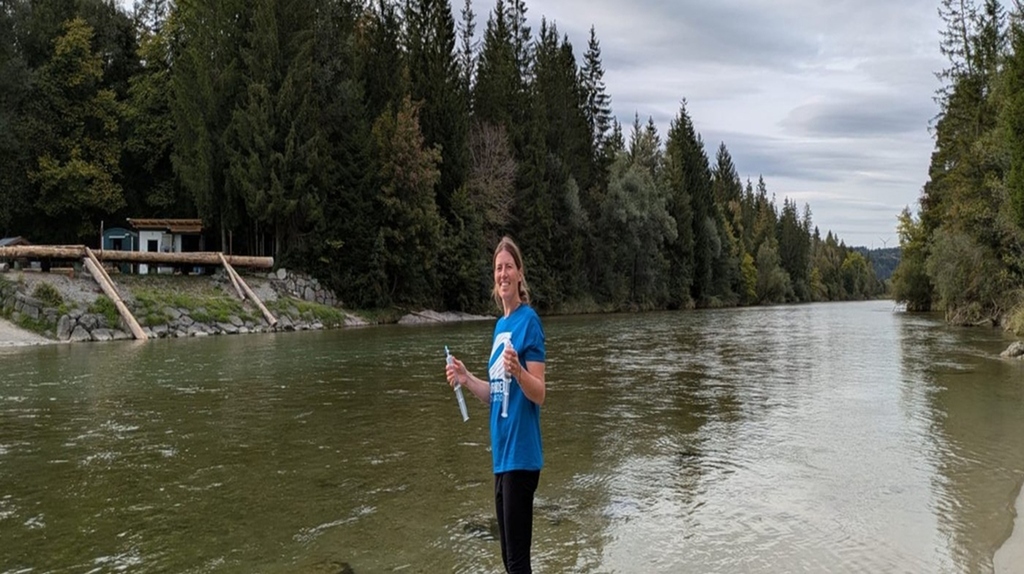
KIT Campus Alpin has developed a method that enables citizens to contribute actively to Greenhouse Gas Measurements. A Citizen Science Pilot Project by Surfrider Foundation Europe Germany e.V. and KIT Campus Alpine for GHG measurements in water bodies.
more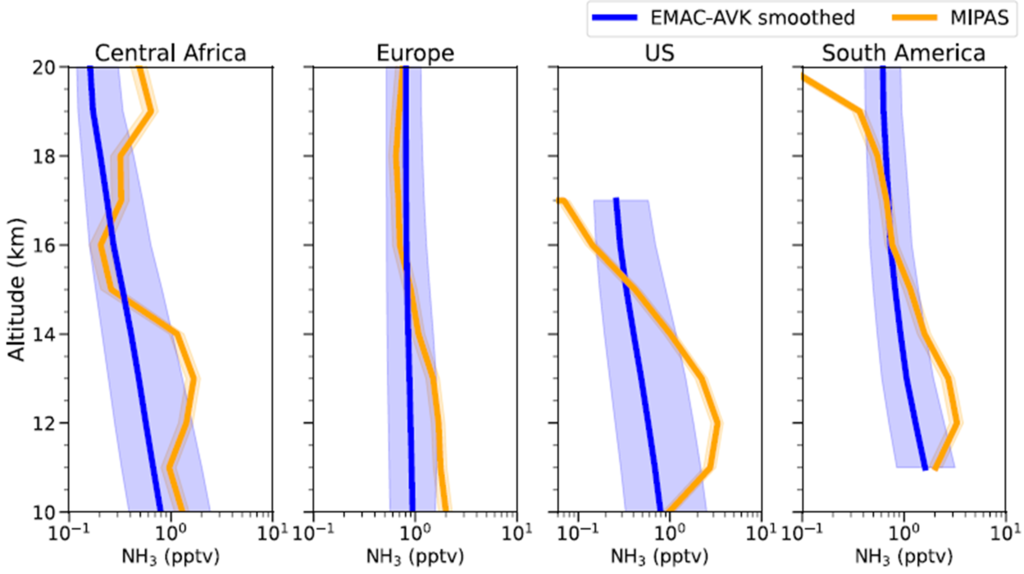
A recent paper published in PNAS evaluates the importance of ammonia (NH₃) for the formation and growth of new particles, and their effects on cloud condensation nuclei in the upper troposphere and lower stratosphere (UTLS). It is based on the detection of NH₃ and NH₄NO₃ in the UTLS by MIPAS/Envisat and GLORIA at IMKASF.
more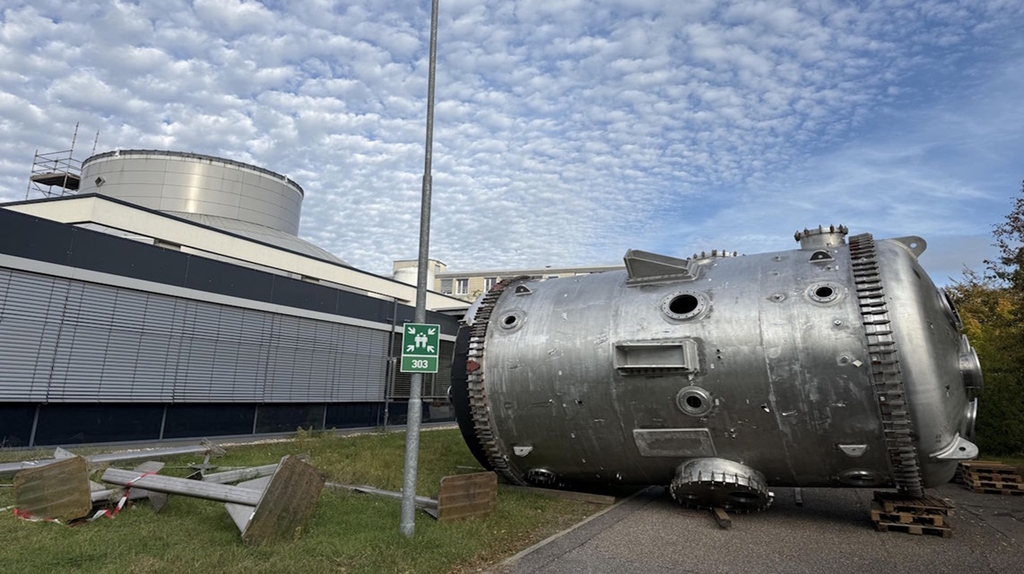
For almost 30 years, the KIT cloud chamber AIDA (Aerosol Interaction and Dynamics in the Atmosphere) was used for research on atmospheric aerosol and cloud processes. The research facility currently undergoes a complete renovation and will be replaced by the new atmospheric simulation chamber AIDAc2, where ‘”c2” stands for “cold and clean”. A major milestone of this project was reached on 29 September 2025, when the cloud chamber with a diameter of 4 m and a height of 7.5 m was moved from its place in the facility to the street in front of the building for its segmentation and proper disposal.
more
Scientists explore how computationally cheap machine learning-based weather prediction (MLWP) models may advance our understanding of tropical-extratropical teleconnections.
more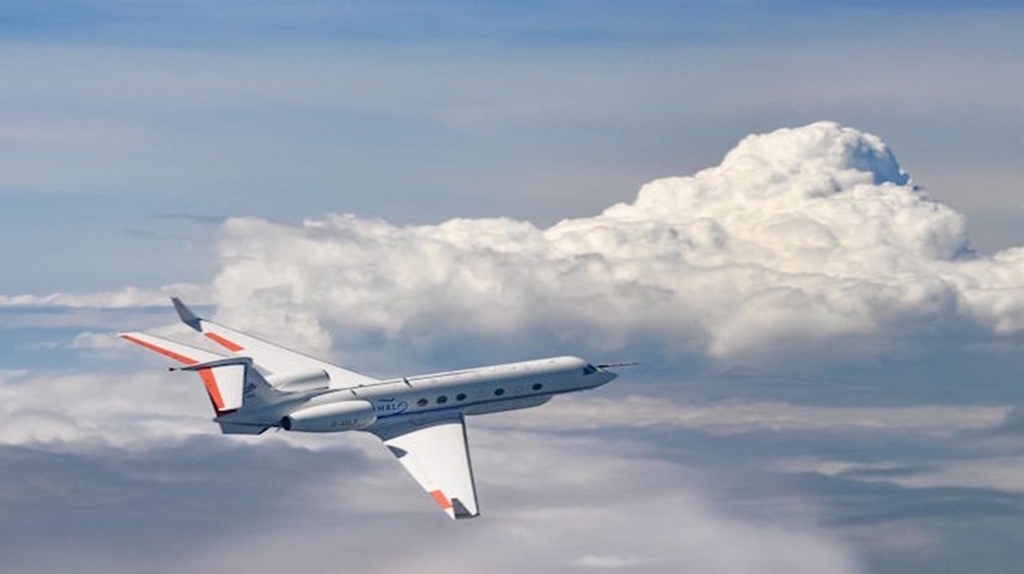
PINEair is a new version of the Portable Ice Nucleation Experiment PINE for aircraft-based measurements of ice-nucleating particles (INPs). For the first time, the instrument measures INPs onboard the German research aircraft HALO during the HALO-SOUTH mission, which targets aerosol-cloud interaction in the Southern Ocean region between New Zealand and Antarctica.
more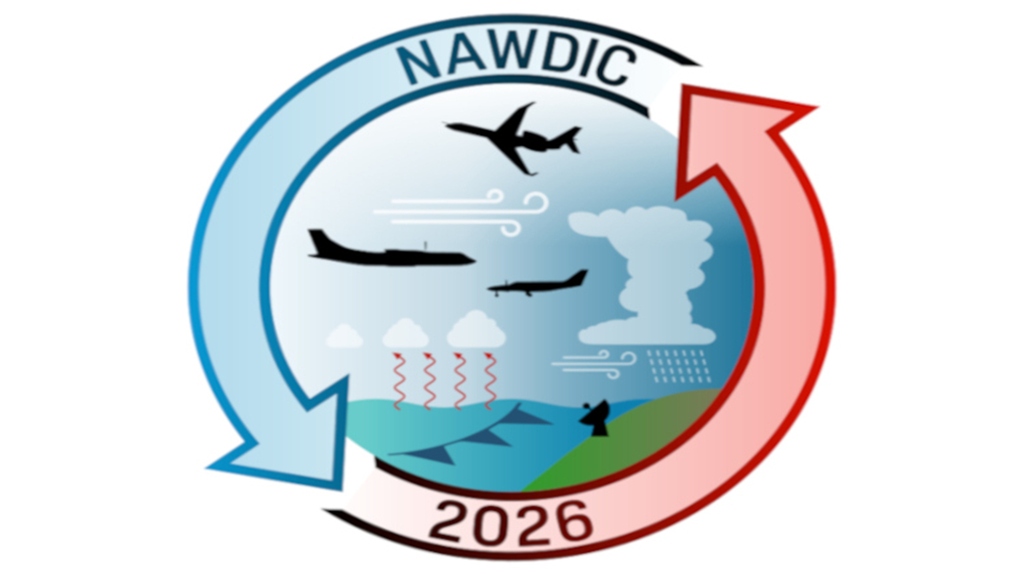
Less than four months before the start of the large measurement campaign NAWDIC, the international partners met for a joint planning workshop.
more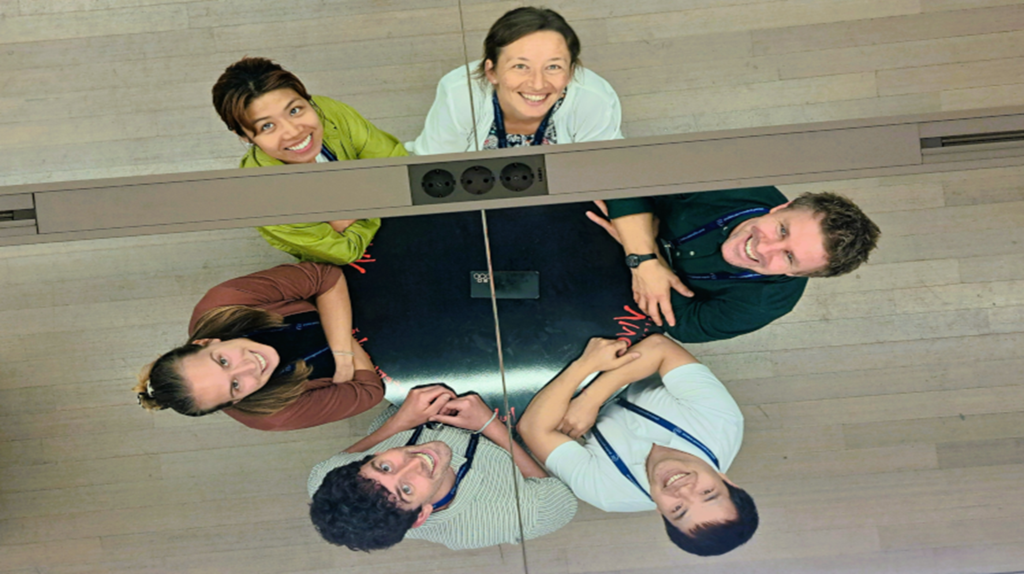
Focusing on the growing use of Machine Learning, the conference tackeled the future of weather forecasting and climate science.
more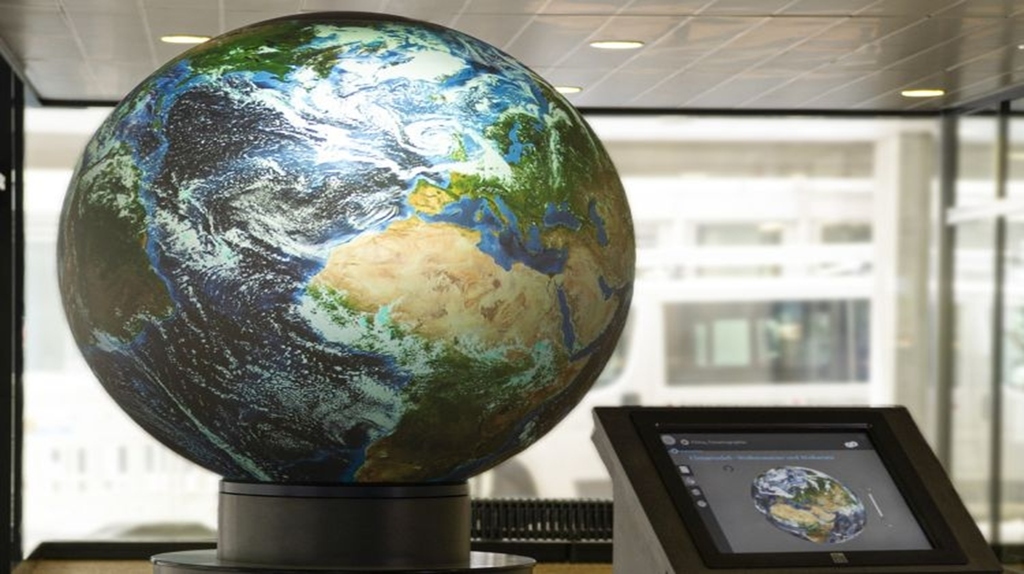
New rankings from U.S. News and ShanghaiRanking reaffirm KIT’s long-standing leadership in atmospheric sciences at the national level
more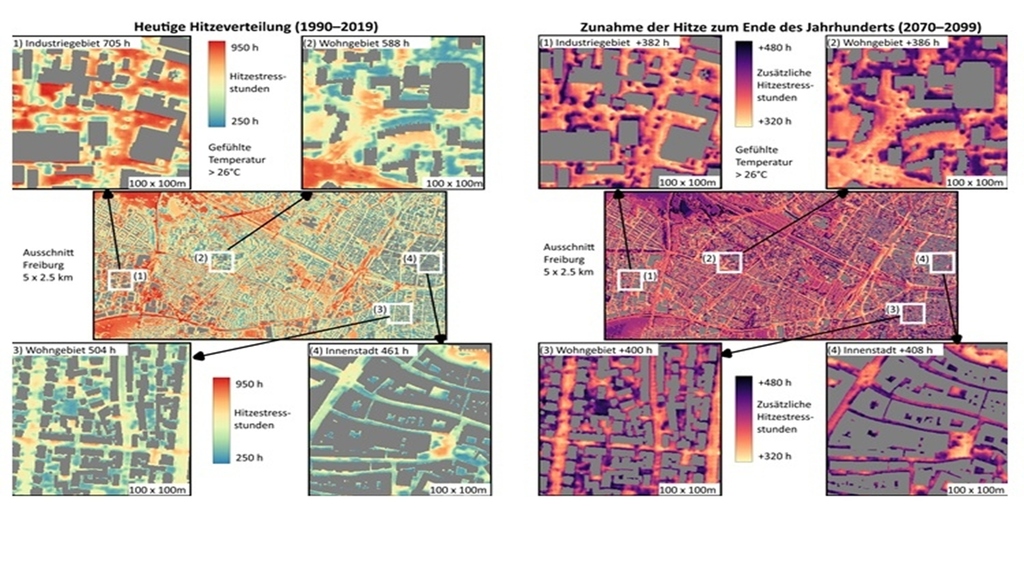
Researchers at KIT and the University of Freiburg have used AI to calculate, at high resolution and over long periods of time, how the heat load per square metre will develop in urban areas in the future.
more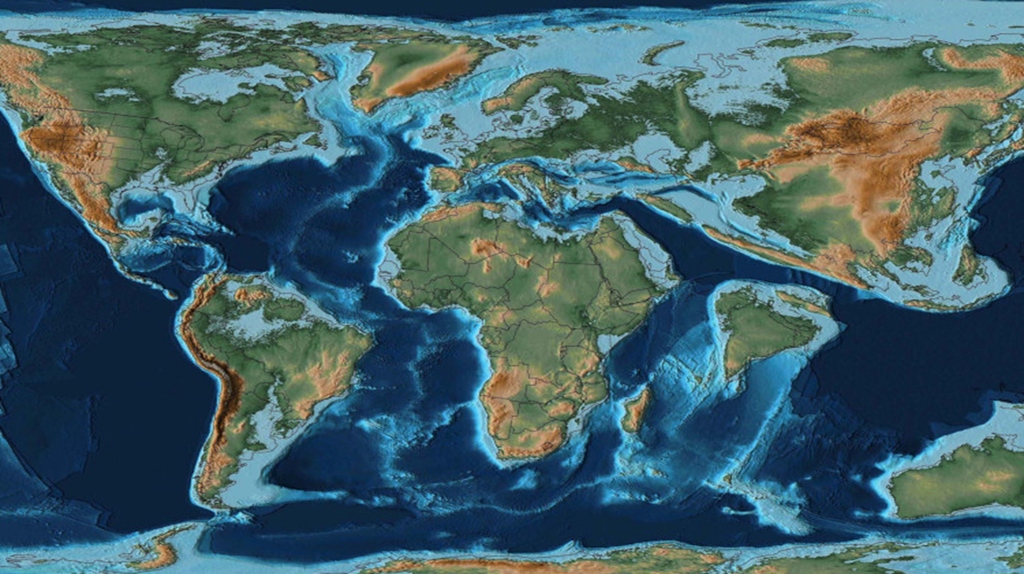
Ancient soils and climate model data reveal a 5°C soil warming and flatter temperature gradients about 56 million years ago
more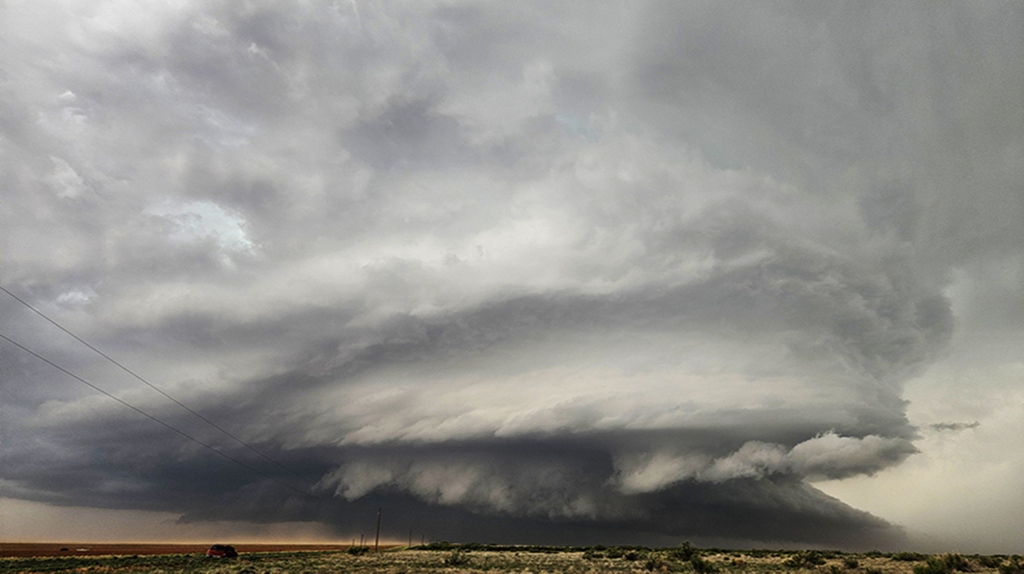
Insights into an extraordinary measurement campaign on hail formation: storm chasing, supercells and spectacular updraft measurements
more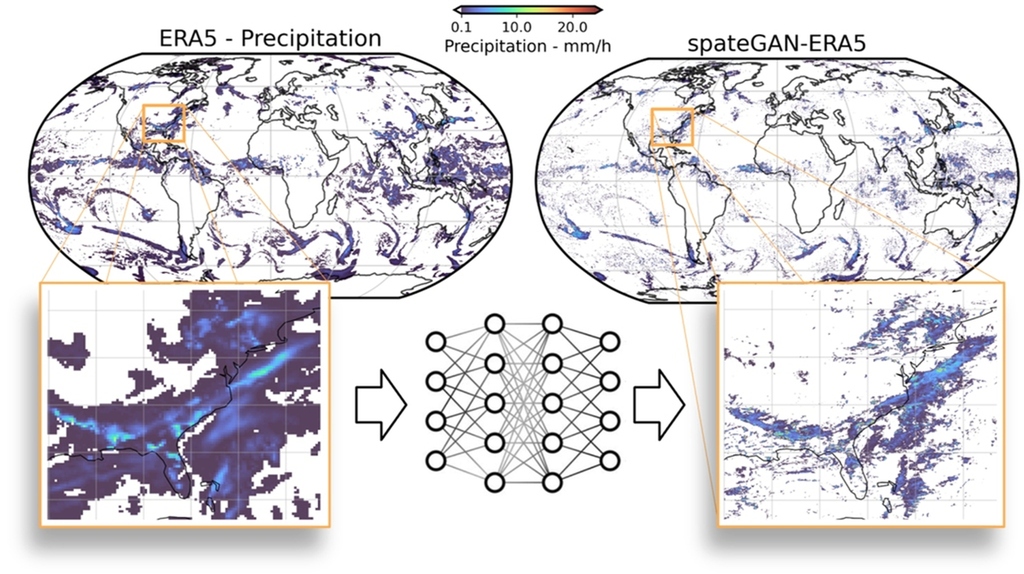
Researchers at KIT Campus Alpin have developed a method that uses artificial intelligence (AI) to convert coarse-resolution global weather data into high-precision precipitation maps - regardless of location, quickly and in a resource-saving manner.
more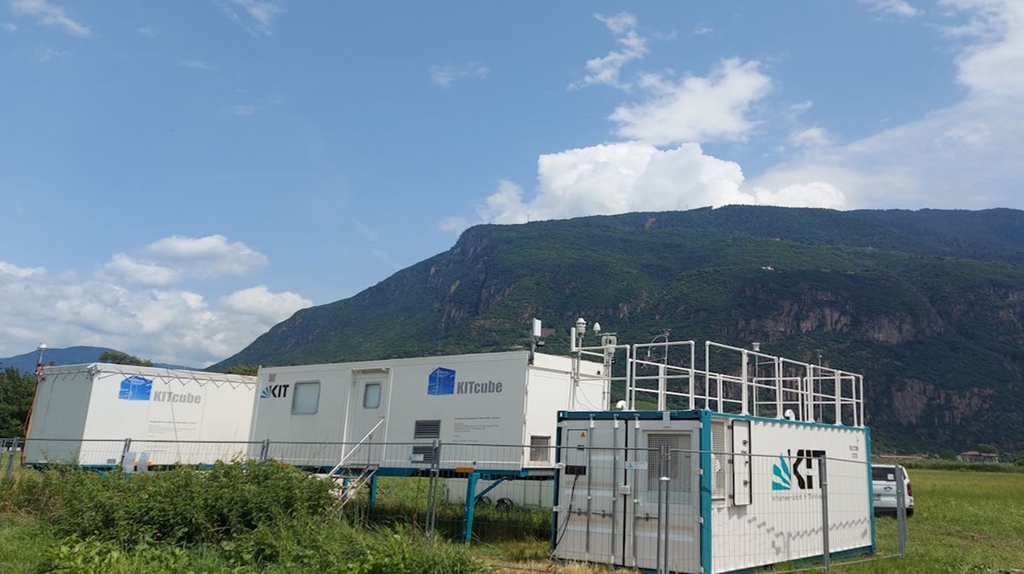
An international consortium of scientists studies the atmospheric exchange processes, dynamics, and chemistry in the alpine region from southern Germany to northern Italy in the TEAMx project. From June to July of 2025, we will contribute dedicated measurements of trace gases, aerosol particles, and ice nucleating particles to better understand their concentrations, composition, sources, and impact on air quality, clouds, and the formation of strong convection.
more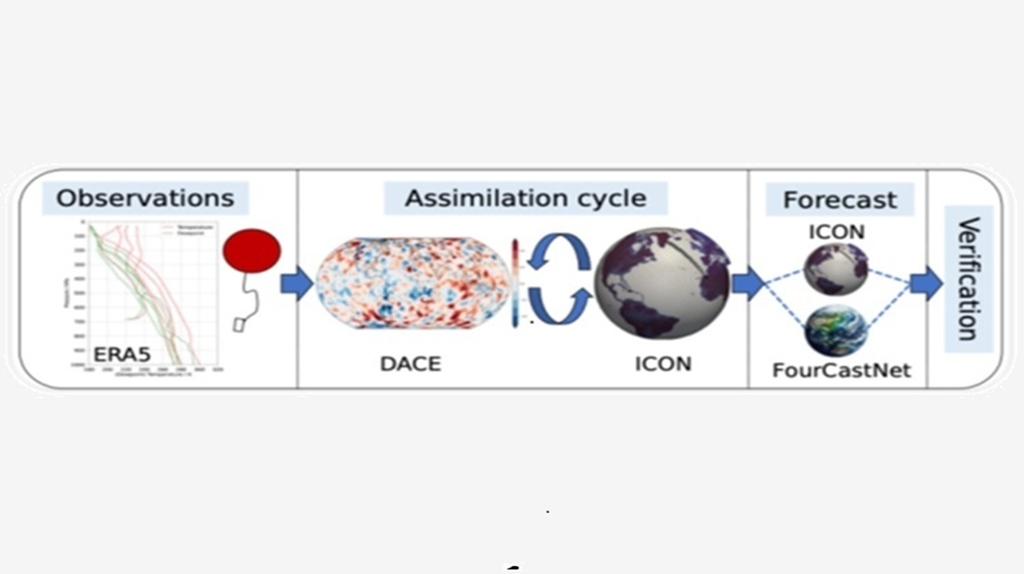
The newly established TEEMLEAP testbed enables fair and systematic intercomparisons between numerical and machine-learning forecasts
more
Current measurement data from the measurement campaign on exchange and transport processes in the atmosphere over the Inn Valley, the Adige Valley, the Alpine crest between and the Alpine Foreland in Germany.
more
Prof. Dr. Harald Kunstmann in a Tagesschau interview about the climate extremes flood and drought. Adaptation mechanisms, regional differences, predictions and the sequence of extreme events. Forwarding to Tagesschau.
more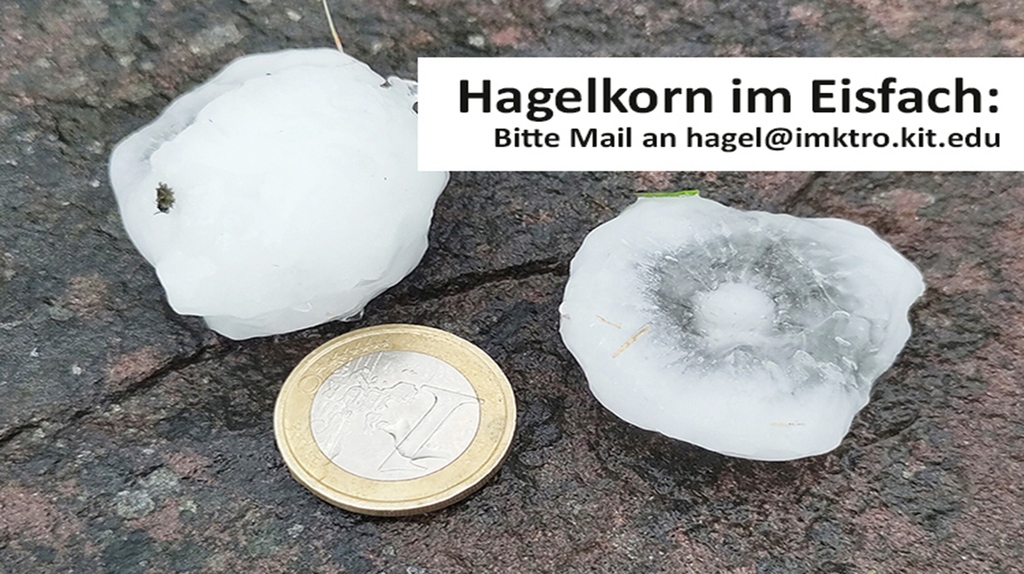
Hailstone in the freezer: Please send an email to hagel@imktro.kit.edu
more
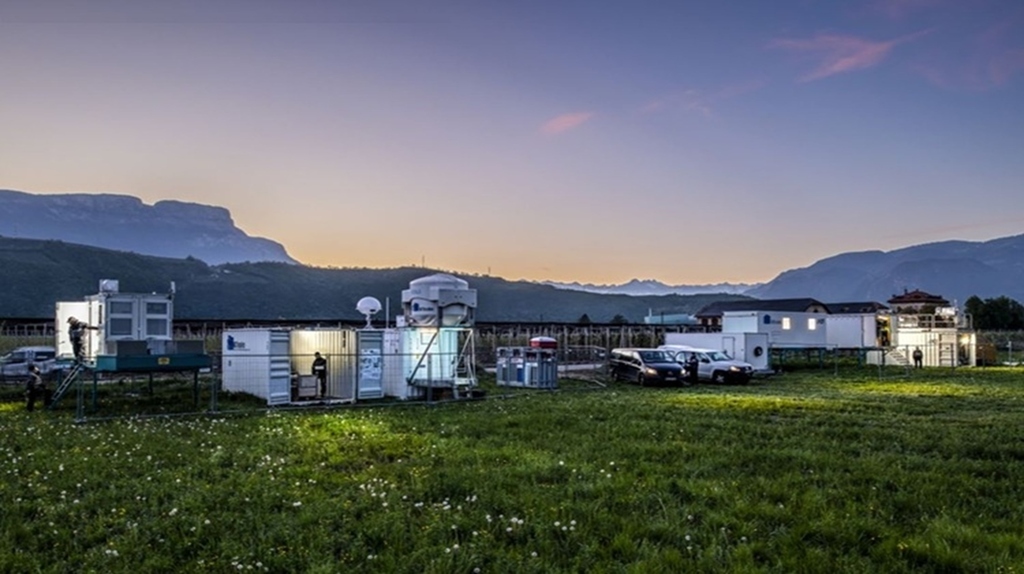
Weather research: International field campaign aims to better understand air exchange processes over the Alps
more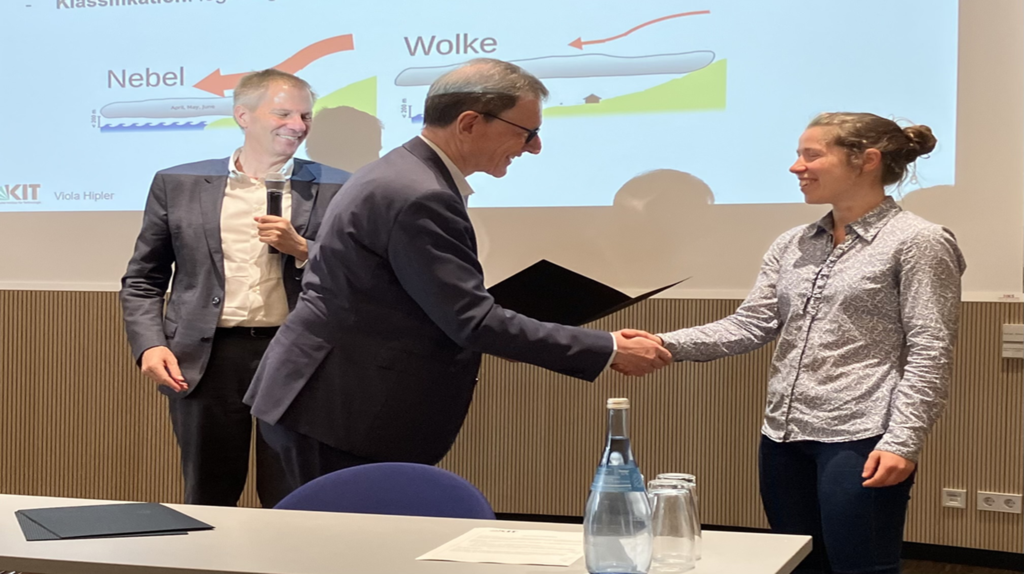
At the annual conference of the KIT Climate and Environment Center on June 5, 2025, Viola Hipler was awarded the Sparkassen-Umweltpreis for her master's thesis on the differentiation of fog and other low clouds in the Namib, which she wrote under the supervision of Hendrik Andersen and Jan Cermak in the AeroFog project.
more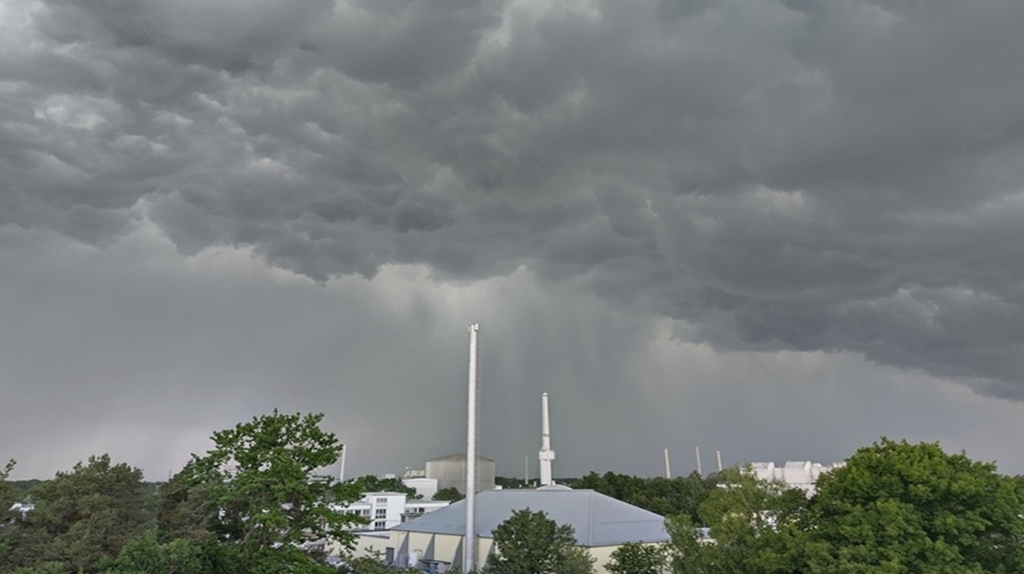
What influences our climate? How can we recognize changes in our environment? At the Science Camp: Climate & Environment, teenagers have the chance to become researchers themselves.
more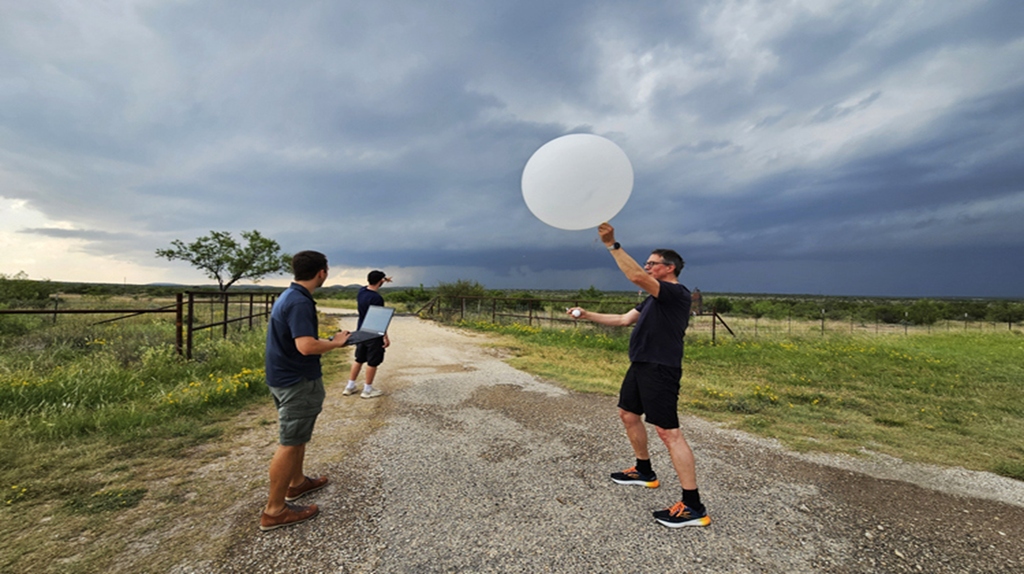
IMKTRO is participating in the international ICECHIP hail measurement campaign in the Great Plains.
more
Water vapor and sea salt emission as well as aerosol dynamics accelerate particle growth & removal in the 2022 Hunga plume
more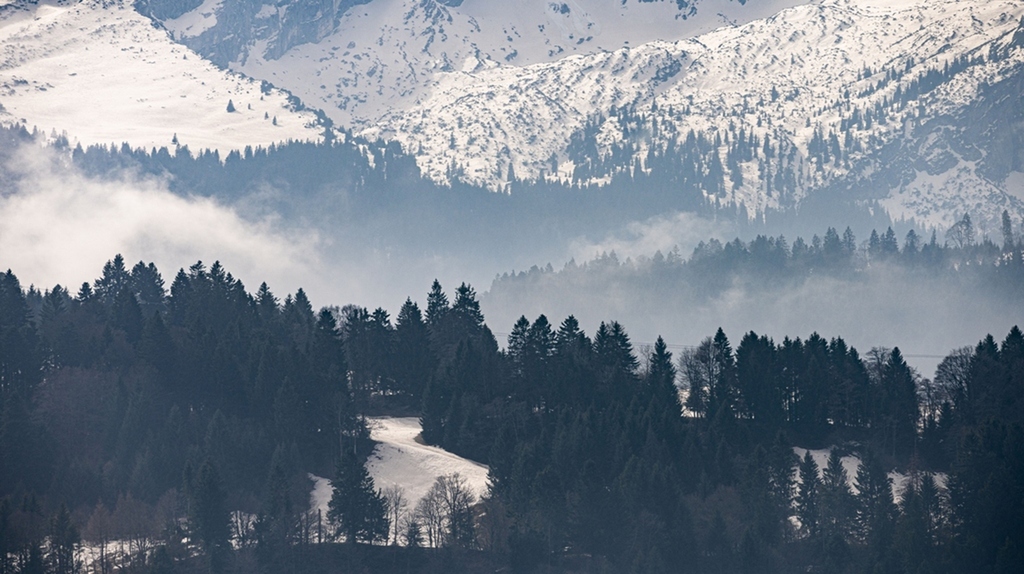
Mountain and winter sports in times of global climate change. Actions and recommendations on the social, economic and technological challenges at the Alpine Climate Summit. Forwarding to the Alpine Climate Summit.
more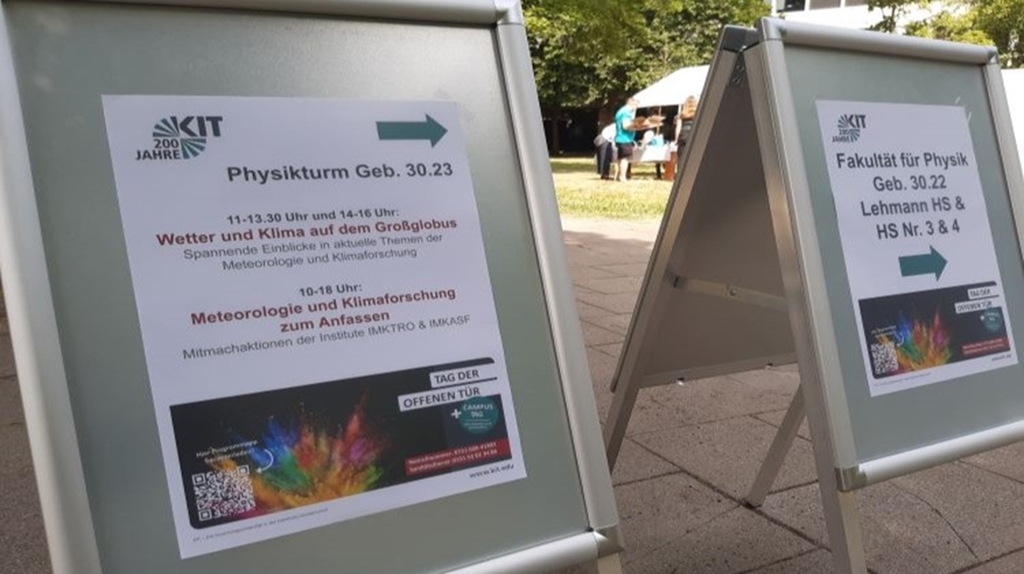
Talks and Hands-On Activities by IMK-ASF and IMK-TRO at KIT’s Open House and Campus Day
more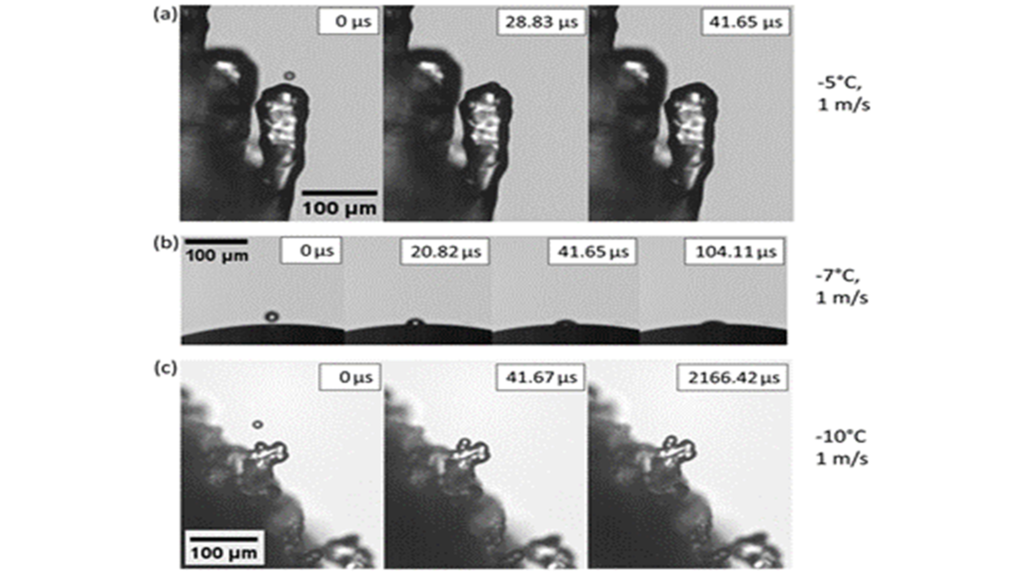
The article Secondary ice production – no evidence of efficient rime-splintering mechanism coauthored by the scientists from Cloud Microphysics Group at IMKAAF and Institute for Tropospheric Research (TROPOS, Leipzig), was selected as one of the three runners-up for the 2024 ACP Paul Crutzen Publication Award from more than 1300 articles submitted in 2024.
more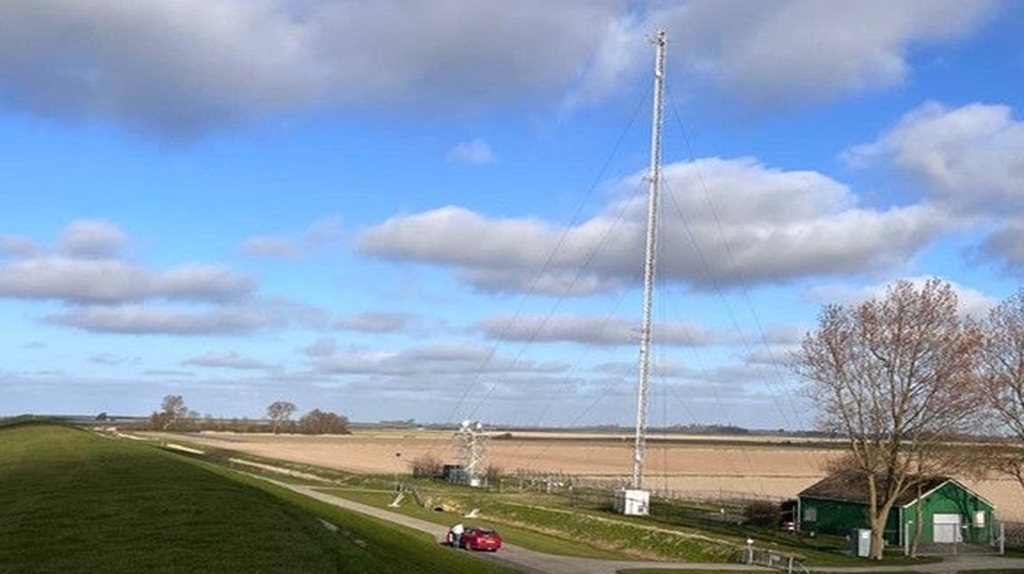
The atmosphere in the Netherlands is containing relatively high levels of reactive nitrogen compounds. Theses can alter the cloud condensation nuclei properties of aerosol particles and hence cloud properties. Therefore, we measured in April 2025 ammonia, volatile organic compounds and aerosol particle composition at two differently polluted locations in the Netherlands and also via a helicopter platform in the international CAINA project.
more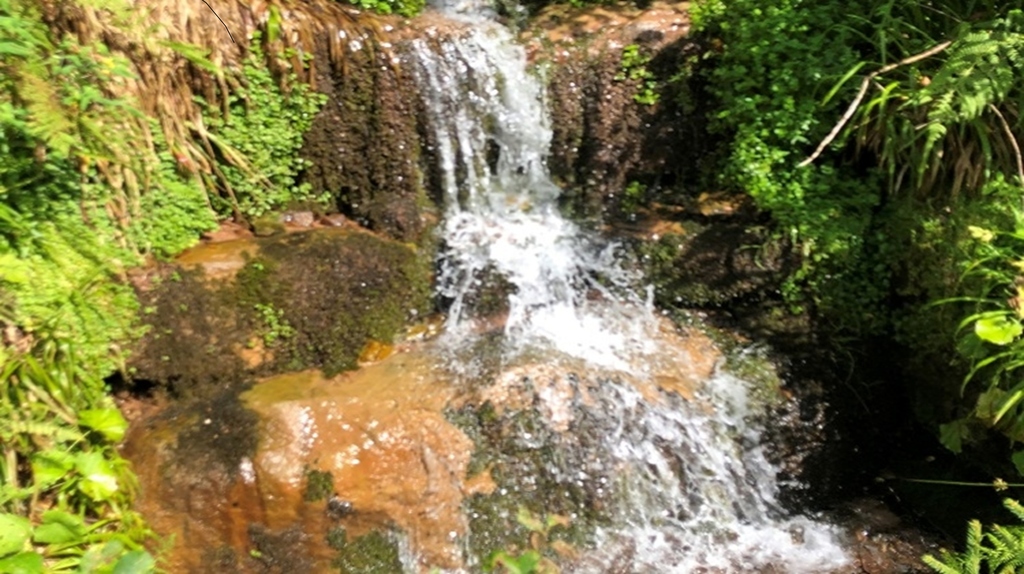
Even though the Black Forest is known as the ‘water tower’ of south-west Germany, past years of drought have already resulted in alarmingly low spring discharges
more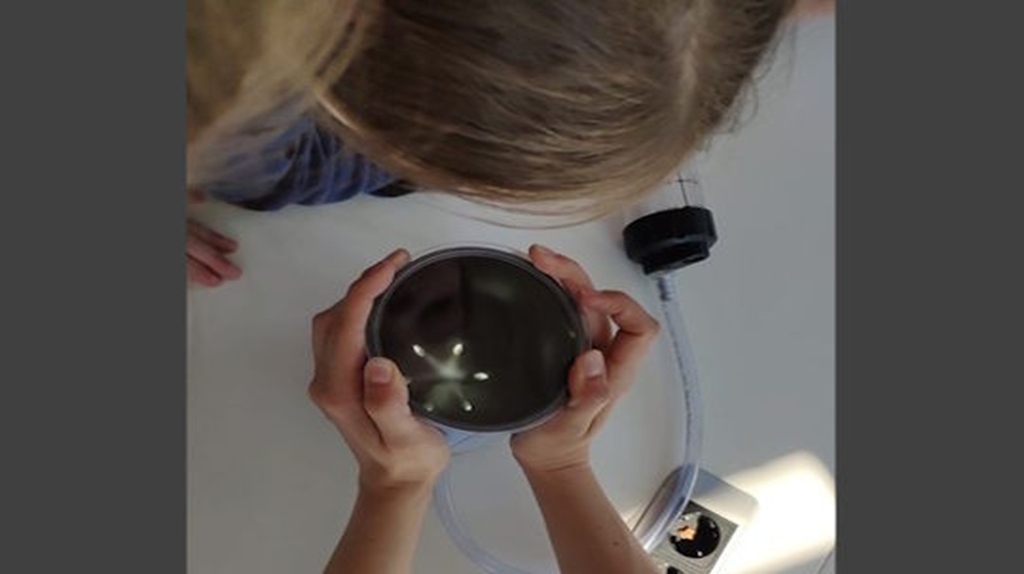
Under the motto "Atmospheric Physics: From Weather to Storms", girls from the 5th to 8th grade were able to gain interesting insights into the diverse work of atmospheric researchers at KIT on Girl's Day on April 3, 2025. The workshop was jointly organized and supervised by members of IMKAAF and IMKTRO.
more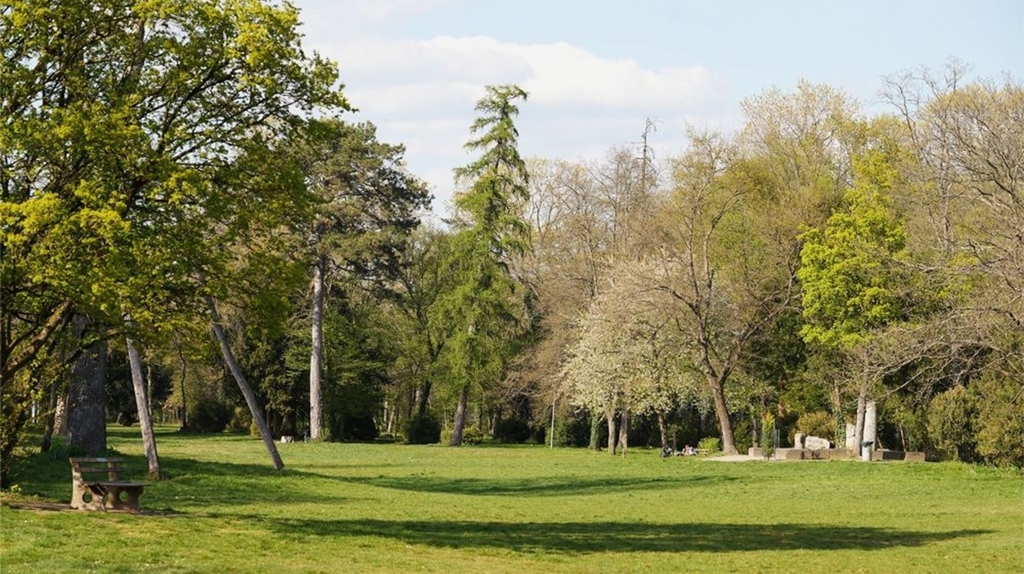
Two KIT studies show how urban greening influences the microclimate, the risk of flooding, and the quality of life in cities
more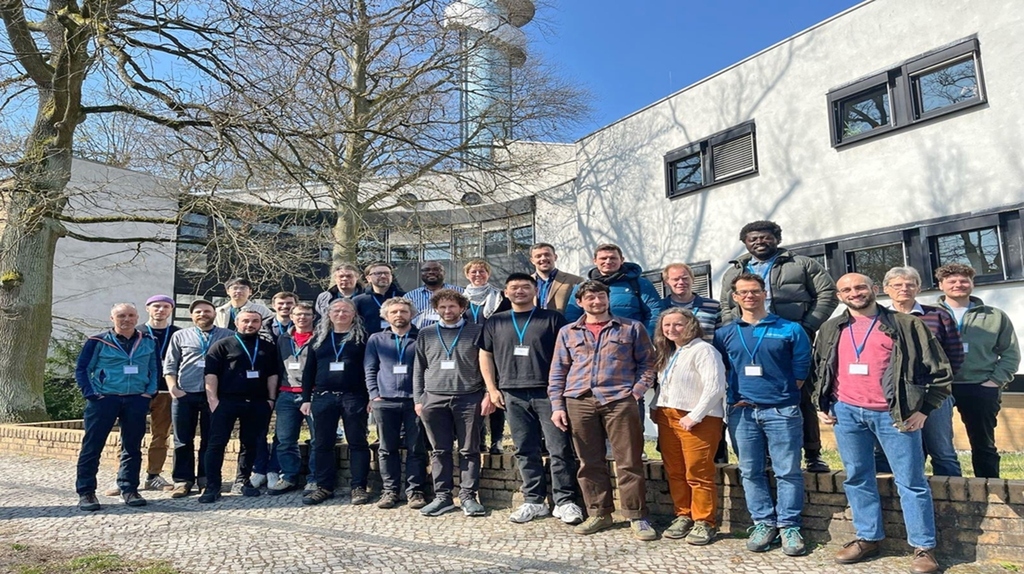
ITMS-Q&S brings together agricultural management experts and experts from the agricultural sector to improve the modeling of greenhouse gas emissions. Joint workshop at FU Berlin.
more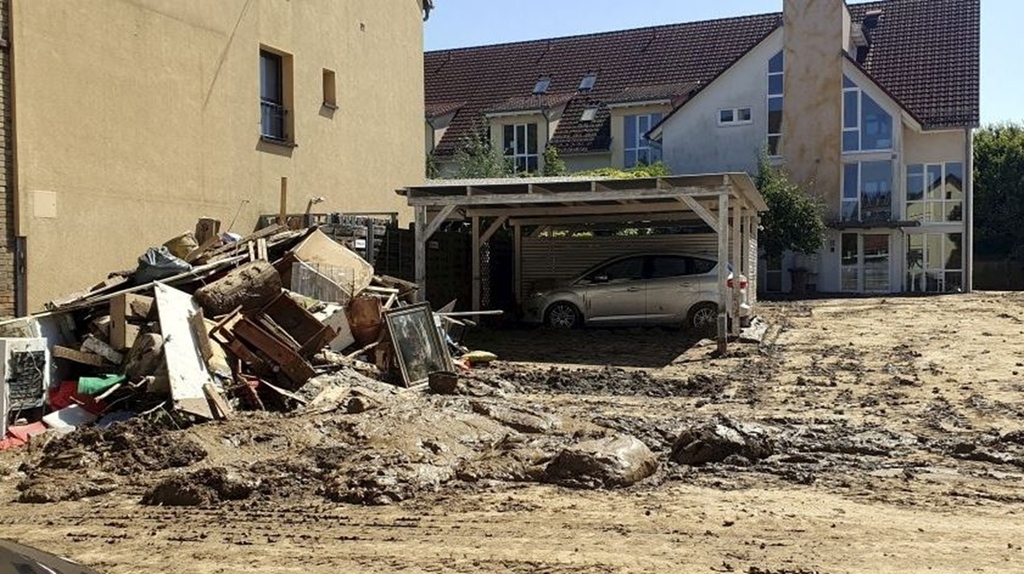
Due to geopolitical upheavals, climate change risks being pushed off the agenda. Researchers from KIT are calling for a shift in thinking and joining a nationwide appeal.
more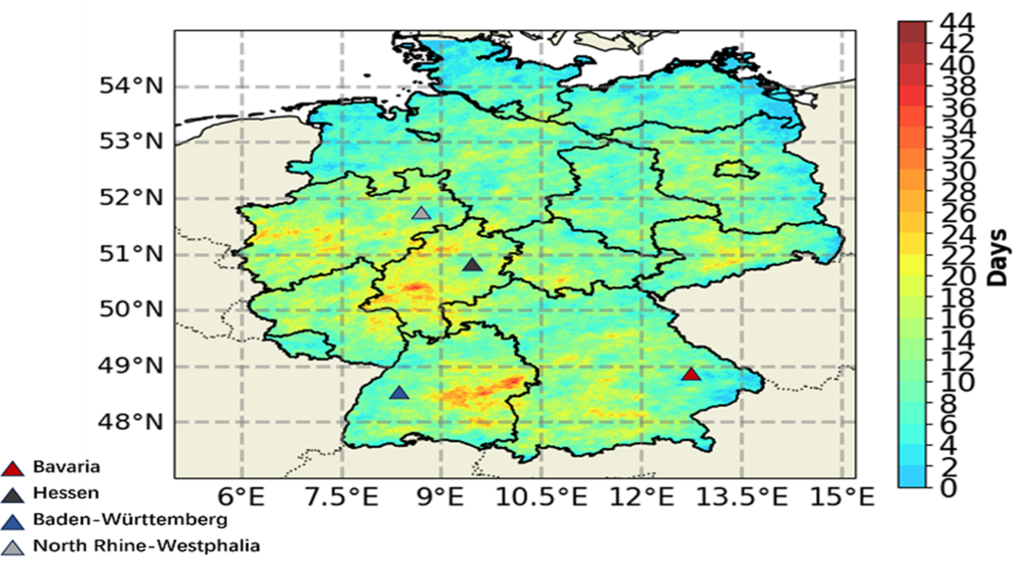
A CNN-based model successfully predicts the daily hail-affected areas in Germany combining reanalysis and radar data
more
From 25 September 2024 to 9 April 2025, KLOCX is part of the TEAMx winter campaign. The research focusses on the study of low-level stratiform clouds and fog. The main aim is to better understand the different life-cycle phases of these clouds to improve the prediction of formation and dissipation.
More information about the measurement campaign: https://www.teamx-programme.org
More information about KLOCX: https://www.imk-asf.kit.edu/Projekte_4081.php
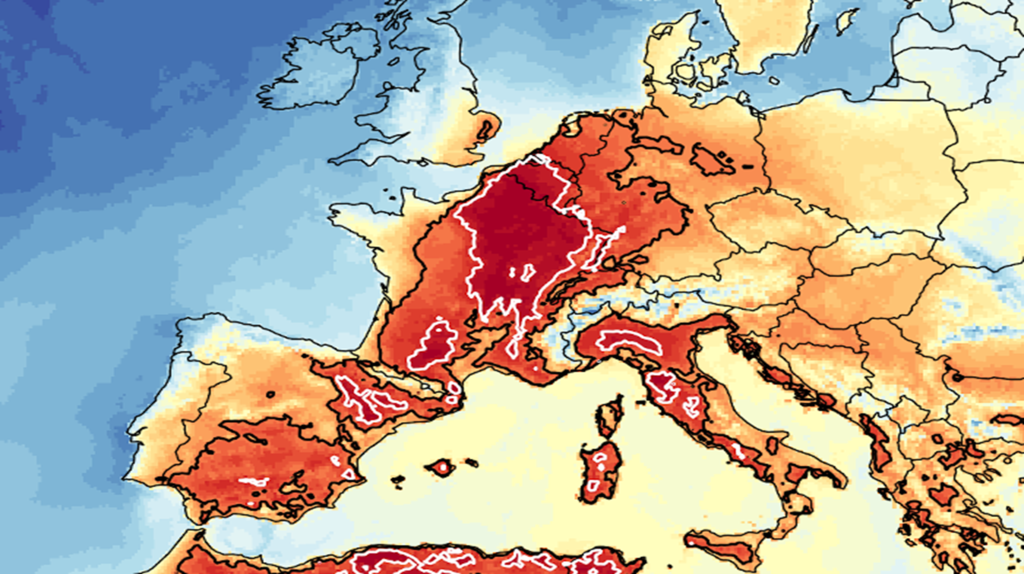
Storyline simulations of the July 2019 heatwave show strong and inhomogeneous temperature amplification compared to the global average warming signal.
more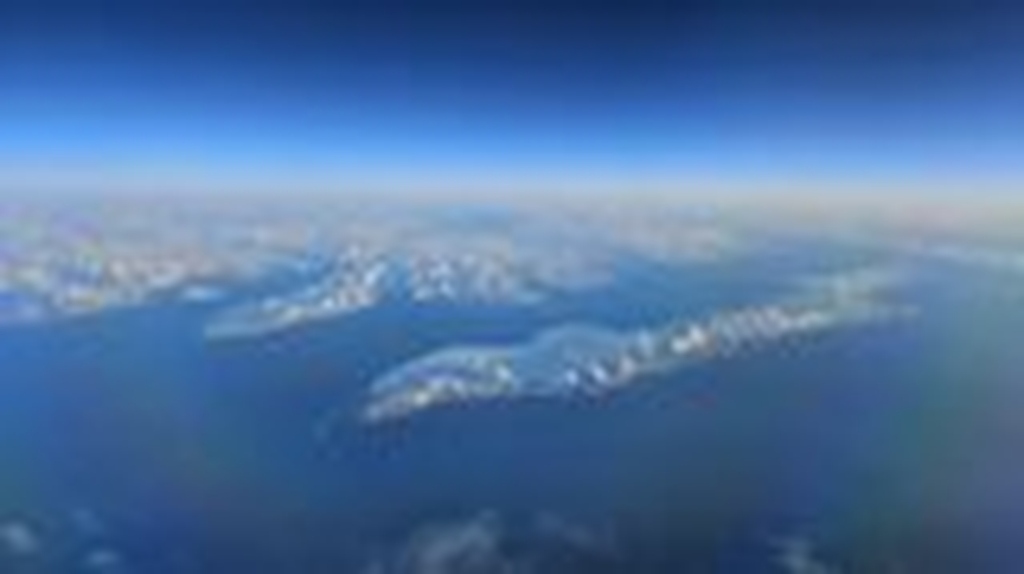
KIT Researchers and Partners Investigating Effects of Ozone and Water Vapor in Troposphere and Stratosphere
more
KIT and partners investigate extreme wind speeds and conduct the first holistic study of weather systems over the North Atlantic.
more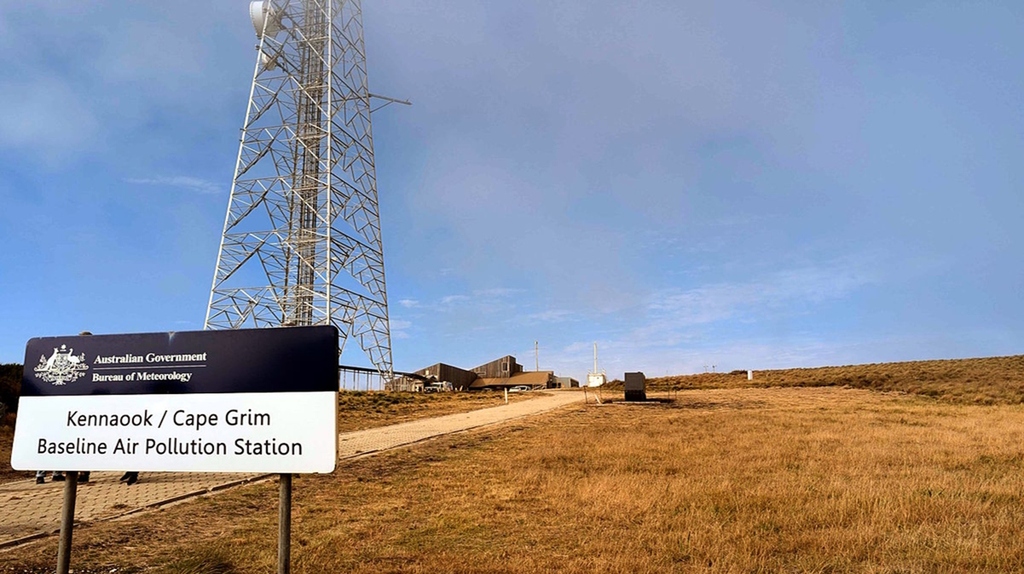
KIT researchers have successfully collected their first set of INP concentration data in the Southern Hemisphere using the Portable Ice Nucleation Experiment (PINE) at the Kennaook Cape Grim Baseline Air Pollution Station (KCG) in Tasmania, Australia. Since November 2024, PINE has been measuring the pristine atmosphere at KCG, which is known to have some of the cleanest air in the world.
more_rdax_98s_rdax_1024x574_98s.jpg)
New Helmholtz-funded project ACTUATE explores climate adaptation scenarios to reduce the impact of future extreme events
more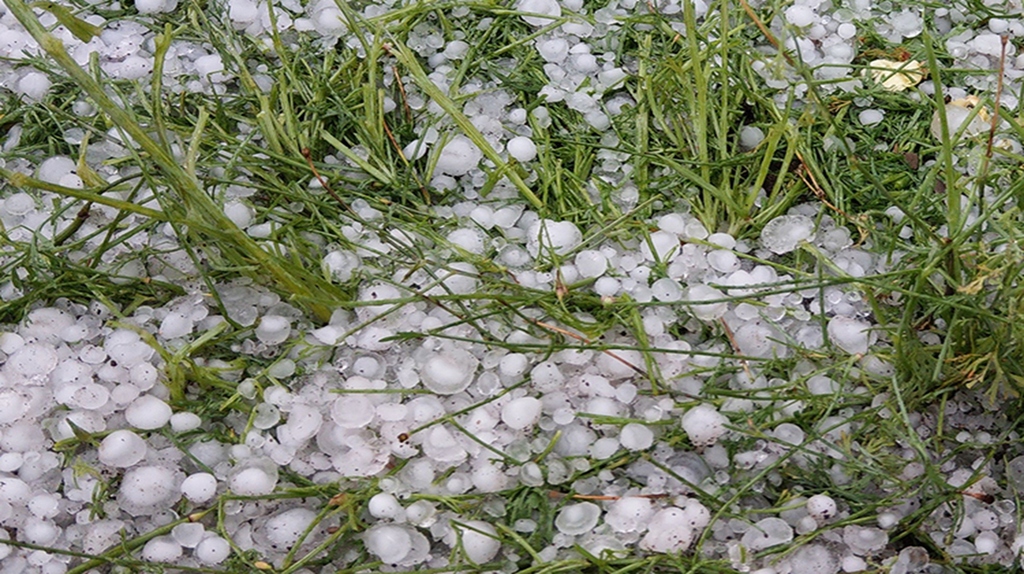
3D radar-based hail tracks reveal region-specific trends in Germany over the past 20 years.
more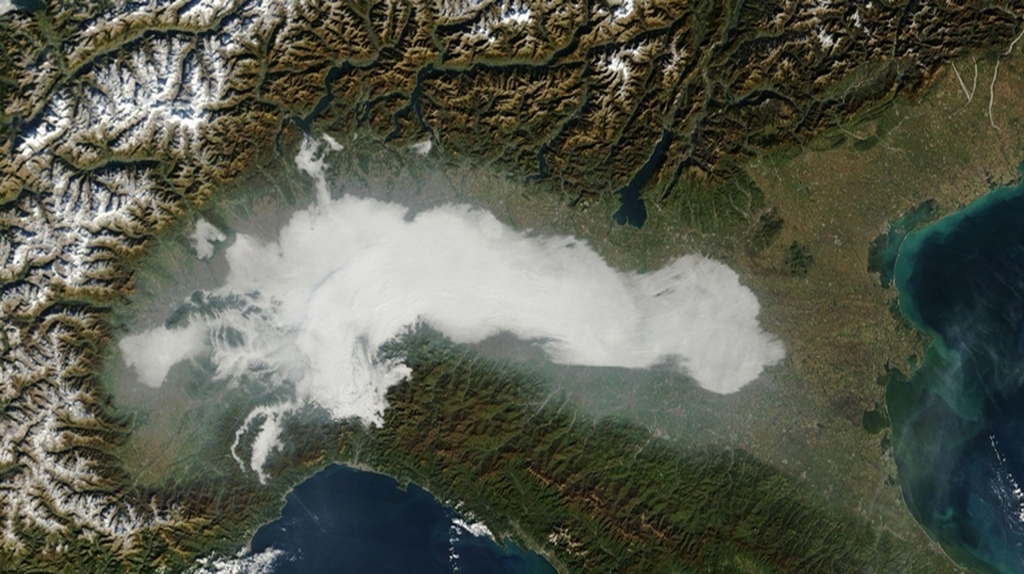
Dr. Eva Pauli (SKL) recently shared insights from her current fog research at IMKASF in the Neue Zürcher Zeitung and NASA's Earth Observatory blog „Image of the day“.
more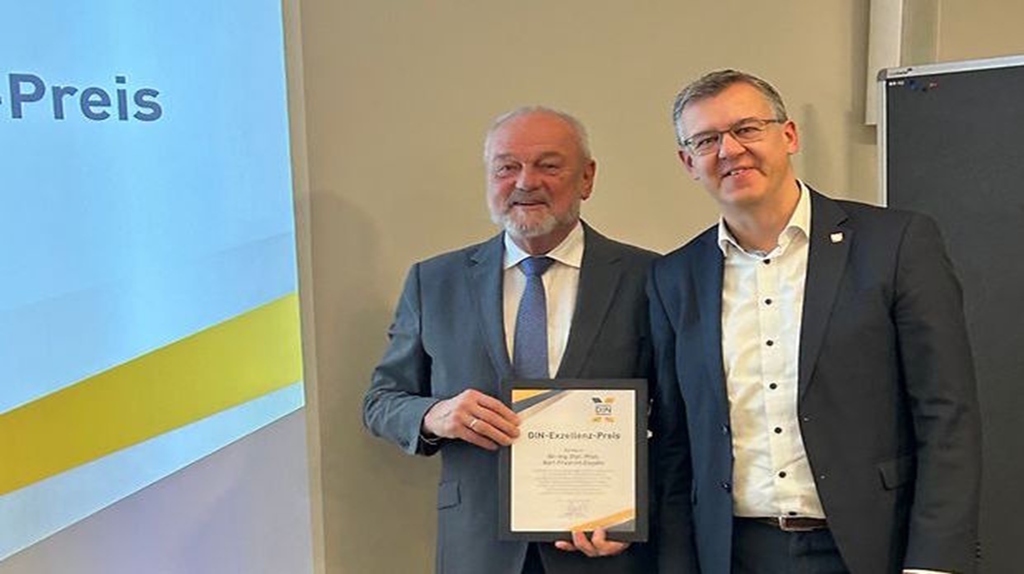
The AAF member and KIT Distinguished Senior Fellow Dr. Ing. Karl-Friedrich Ziegahn was awarded the DIN Excellence Prize for his many years of active work as Chairman of the Presidential Committee "Research, Innovation, and Development".
more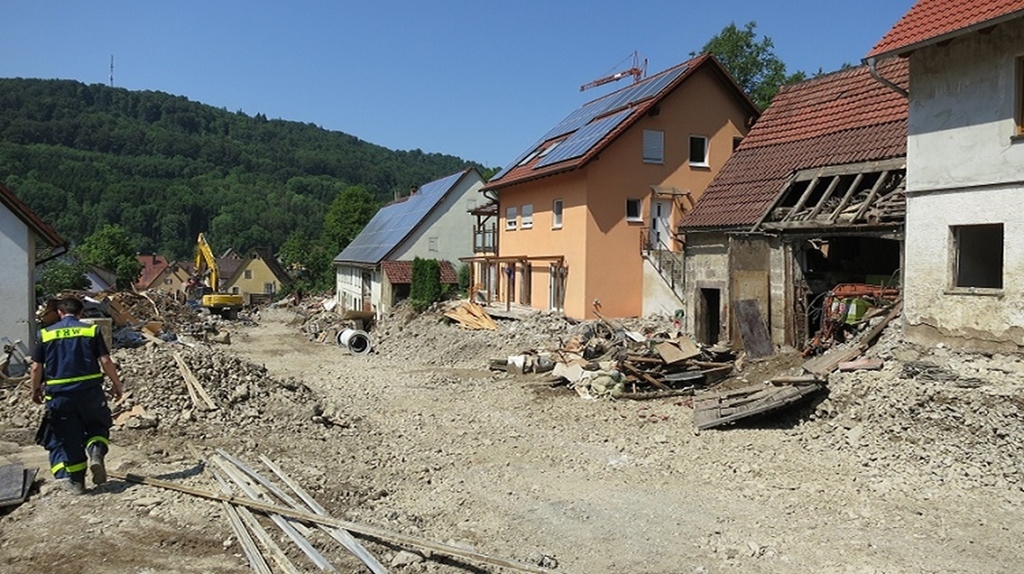
New BMBF-funded joint project KI-HopE-De (Al-supported flood forecasting for small catchment areas in Germany) launched
more
Martina Klose and her team investigate aerosols in the Earth system, especially mineral dust. For this purpose, they use and develop numerical models and field and laboratory measurements.
more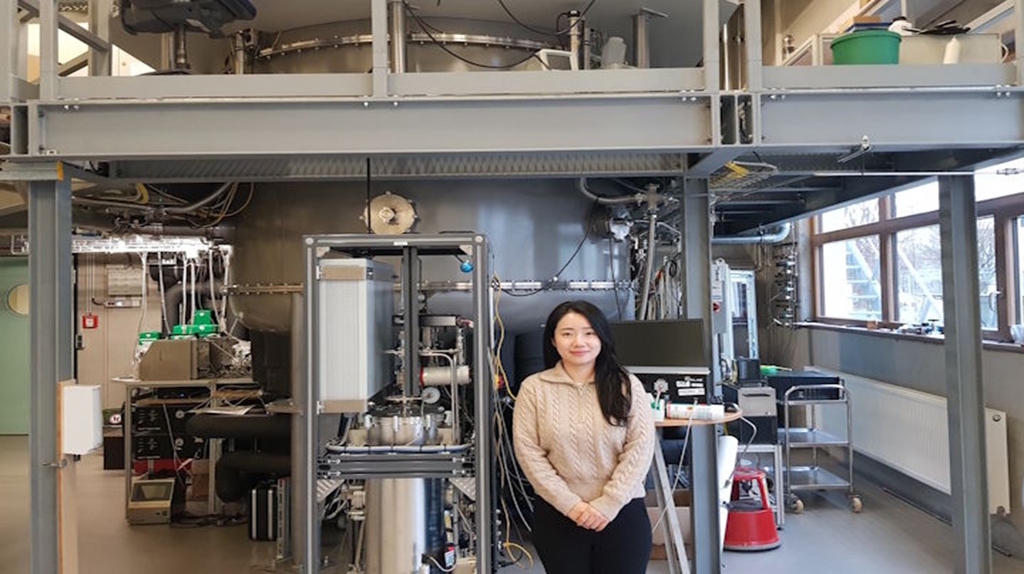
We recently welcomed Dr. Najin Kim from the Korean Institute of Science and Technology (KIST), South Korea as visiting scientist at our institute. The visit is part of the ongoing KIST efforts to foster academic excellence and collaboration across borders. With her expertise in aerosol and cloud condensation nuclei studies, Dr. Kim conducts and leads novel experiment series at our new dynamic cloud simulation chamber AIDAd.
more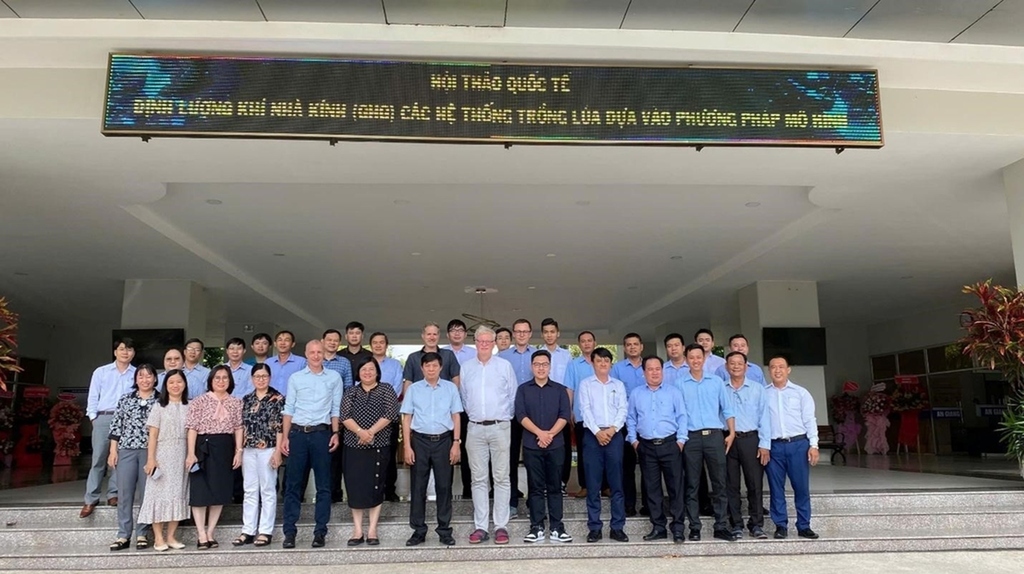
Workshop on quantifying GHG emissions, identifying and evaluating efficient mitigation options from rice systems at Giang University Vietnam with 30 participants from academia, ministries, national and provincial authorities.
more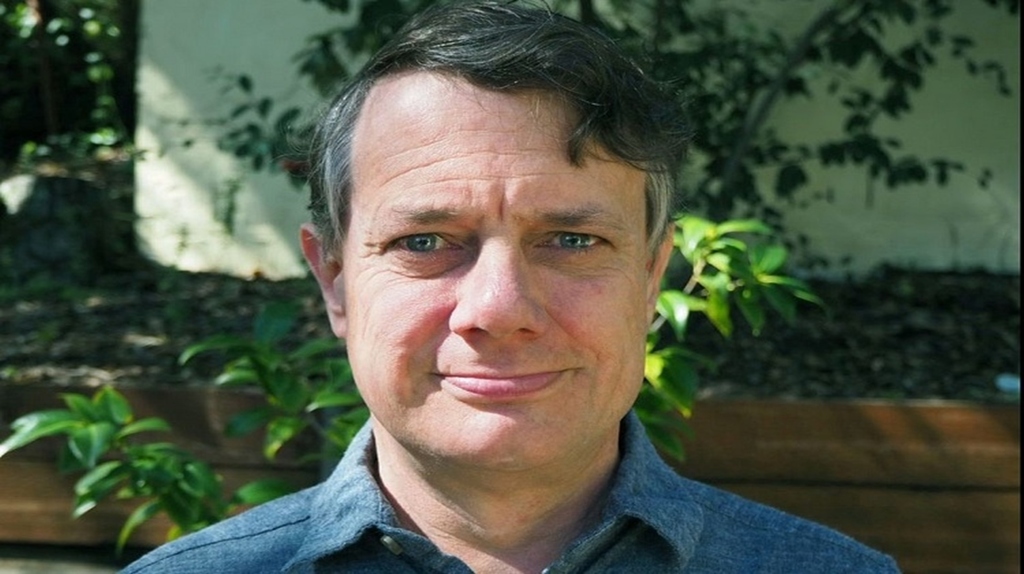
Leading US Researcher Receives Prize Valued at up to EUR 50,000 for His Work on Early Warning and Forecasting Methods
more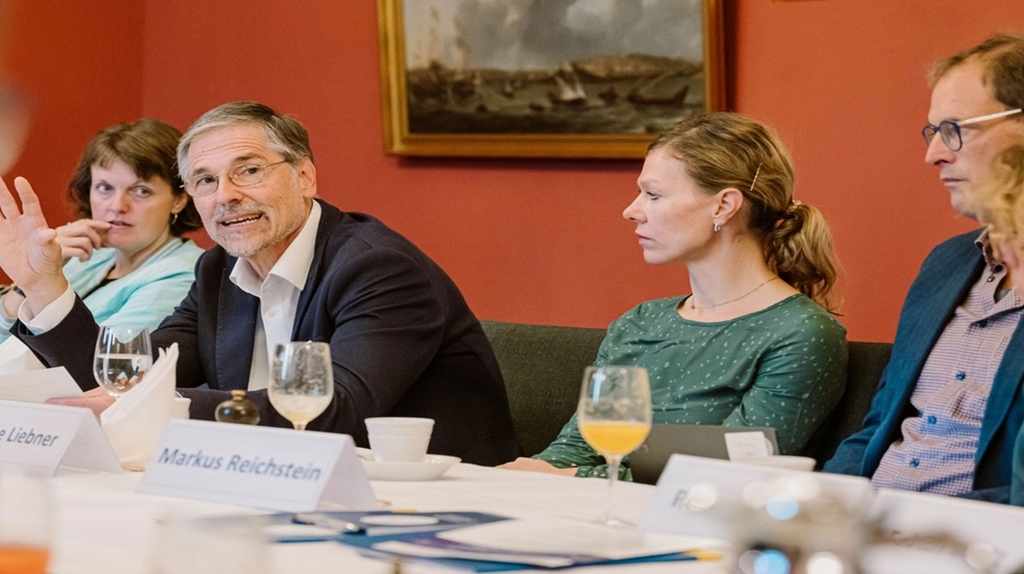
‘The climate impact of methane - an underestimated danger’. PD Dr Ralf Sussmann was invited to give an expert lecture in the Bundestag on the topic of ‘Measurement, reduction and reporting of methane emissions in the course of national implementation of the EU Methane Regulation’. Forwarding to Helmholtz.
more
The carbon dioxide uptake and conversion of forests was lower than its release in the years 2017-2022. ORF science report and interview with Prof. Dr. Almut Arneth on forest damage, forest conversion, rising temperatures and CO2 storage function. Forwarding to science.orf.at
more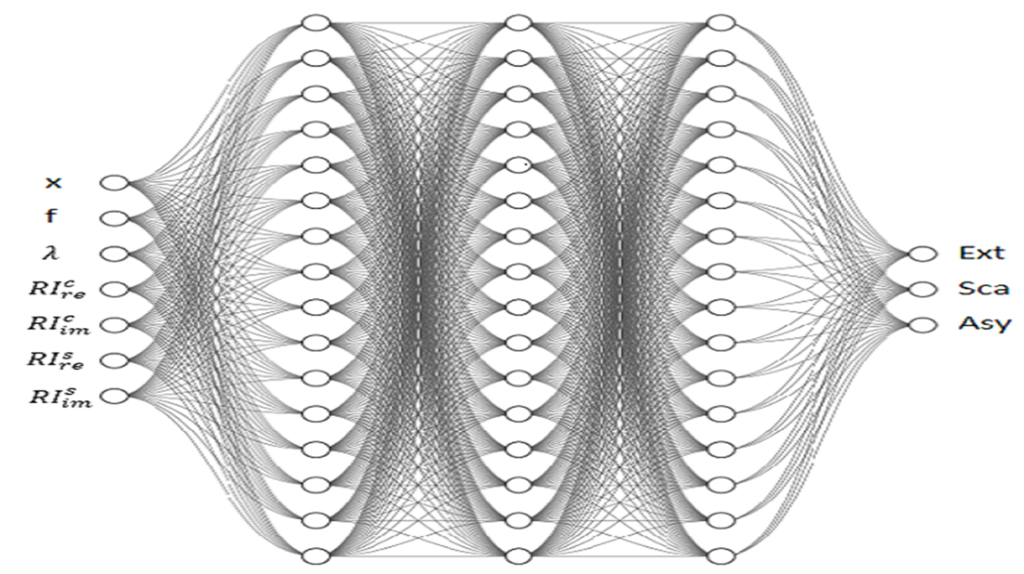
MieAI: Fast, accurate, and efficient aerosol optics modeling for climate, weather, and energy applications
more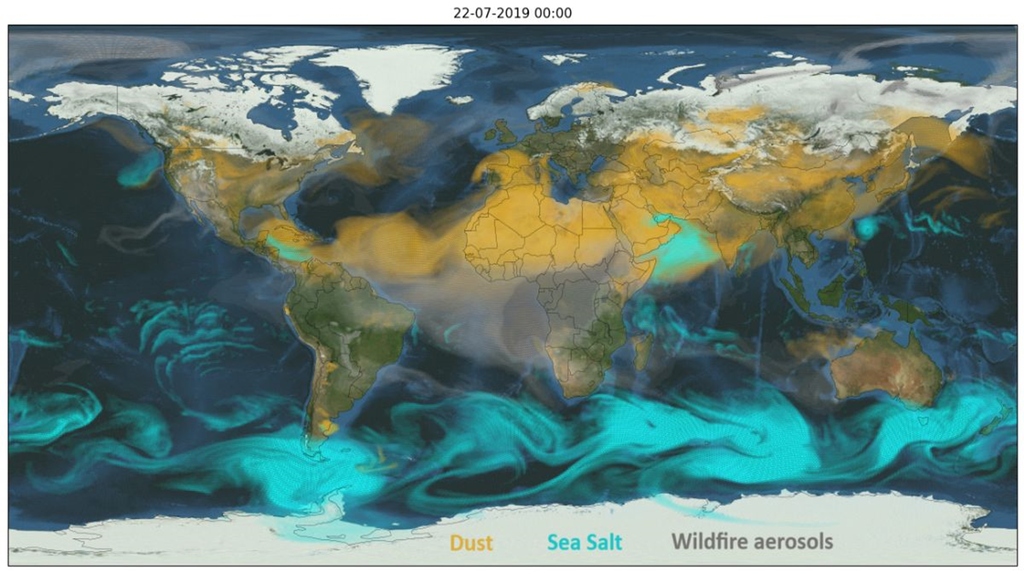
For example, the ICON-ART model system enables predictions to be made about the distribution of mineral dust in the atmosphere.
more
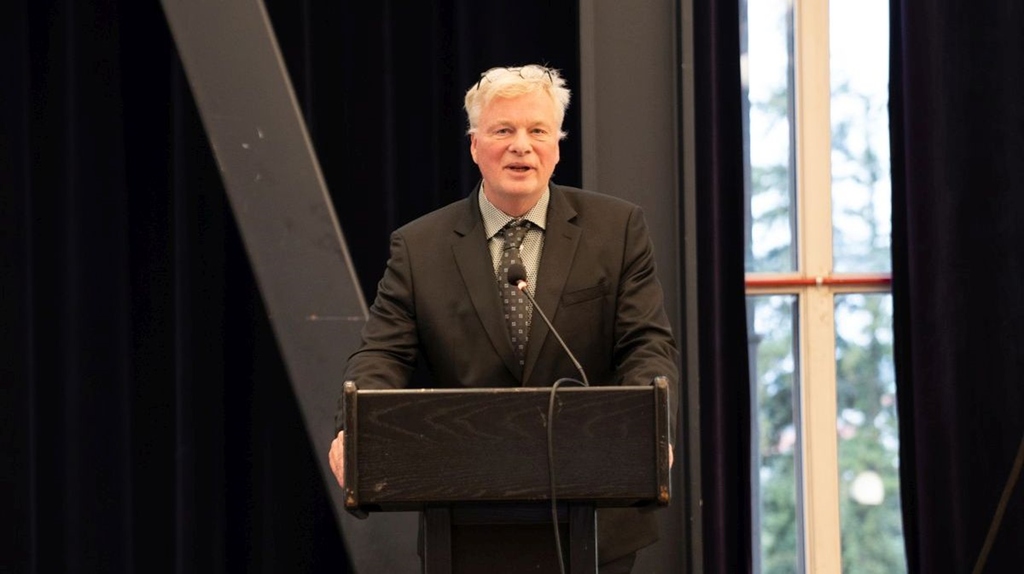
Klaus Butterbach-Bahl received the Nobel Sustainability Trust Prize for his research into quantifying the environmental impact of agriculture.
more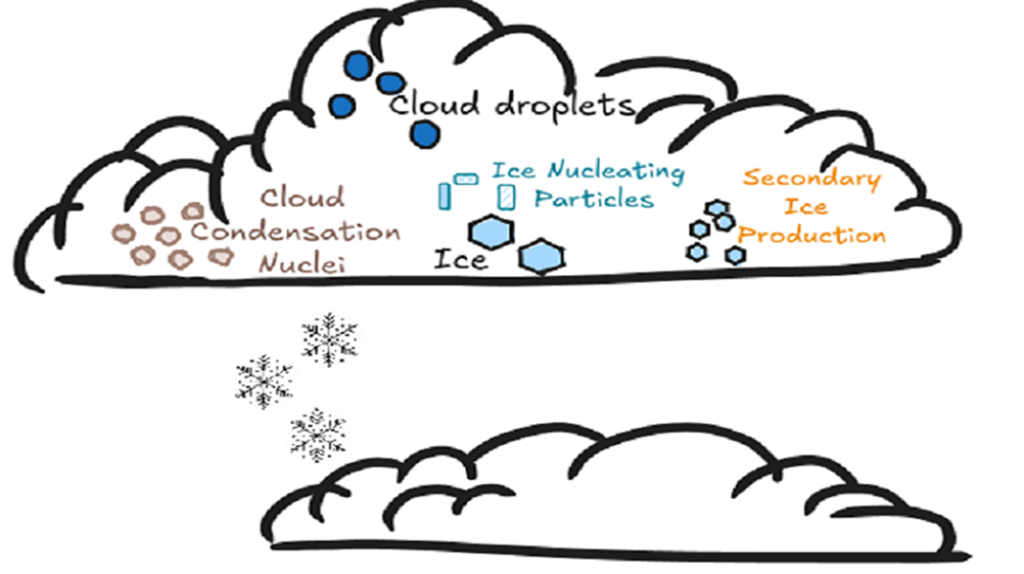
To simulate Arctic multilayer clouds, accurate thermodynamic profiles and efficient cloud ice formation mechanisms are required
more
Prof. Dr. Almut Arneth Head of the Department “Global Land-Ecosystem Modelling” at KIT/ Campus Alpin is one of the “Highly Cited Researchers” in the Web of Science Group's ranking list.
more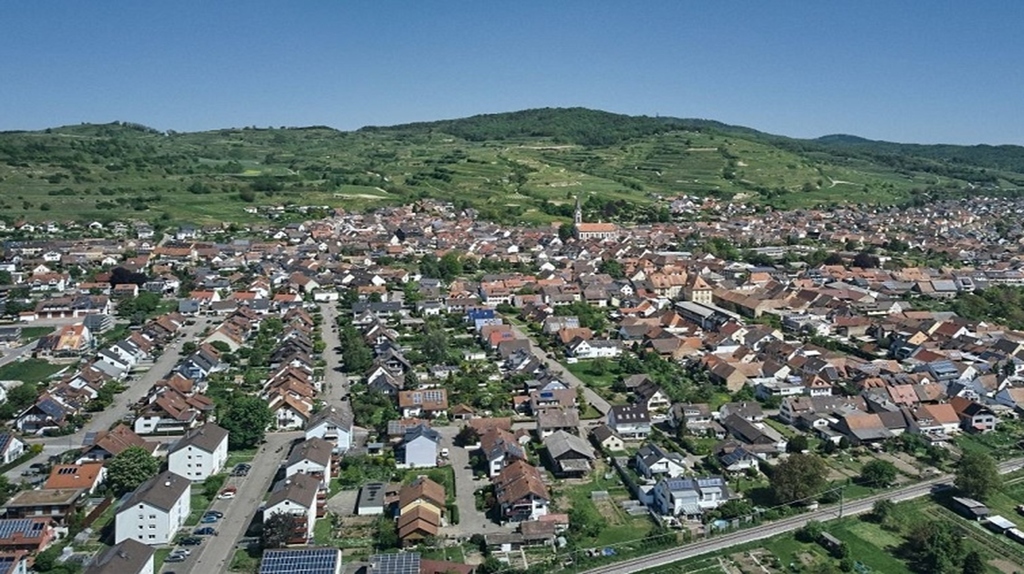
As part of the ICN, researchers from KIT and the University of Freiburg are working with the municipality of Ihringen to develop heat protection concepts to ensure the population's quality of life in the long term
more
KIT researchers investigate the removal of micropollutants in electrochemical electrochemical membrane reactor using carbon nanotubess
more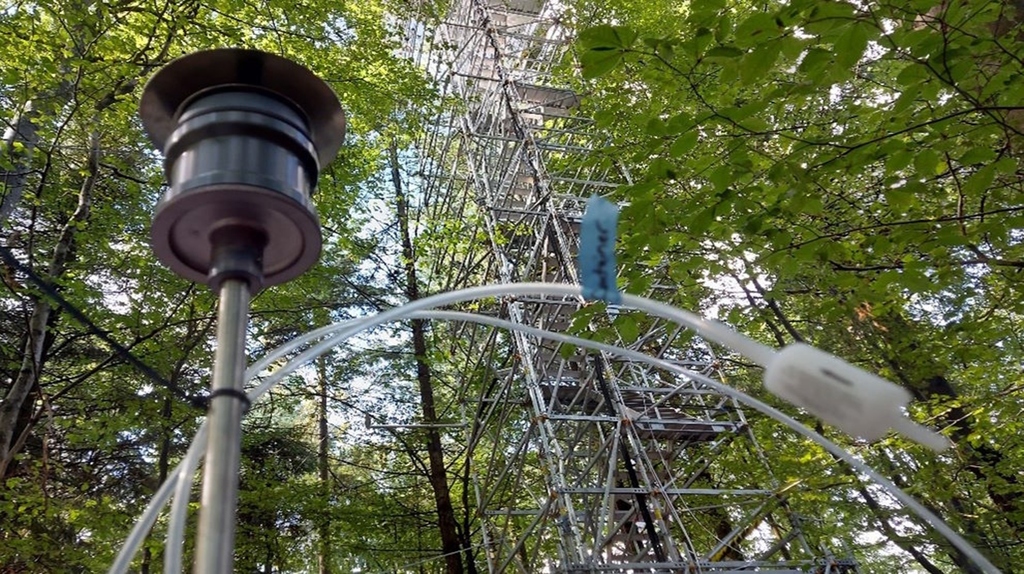
In autumn 2024 we studied the impact of meteorological conditions on emissions of volatile organic compounds from beech and douglas fir trees at the new ECOSENSE station in the black forest. Emissions from individual leaves and fir needles at different locations in the canopy were measured on-line by mass spectrometry.
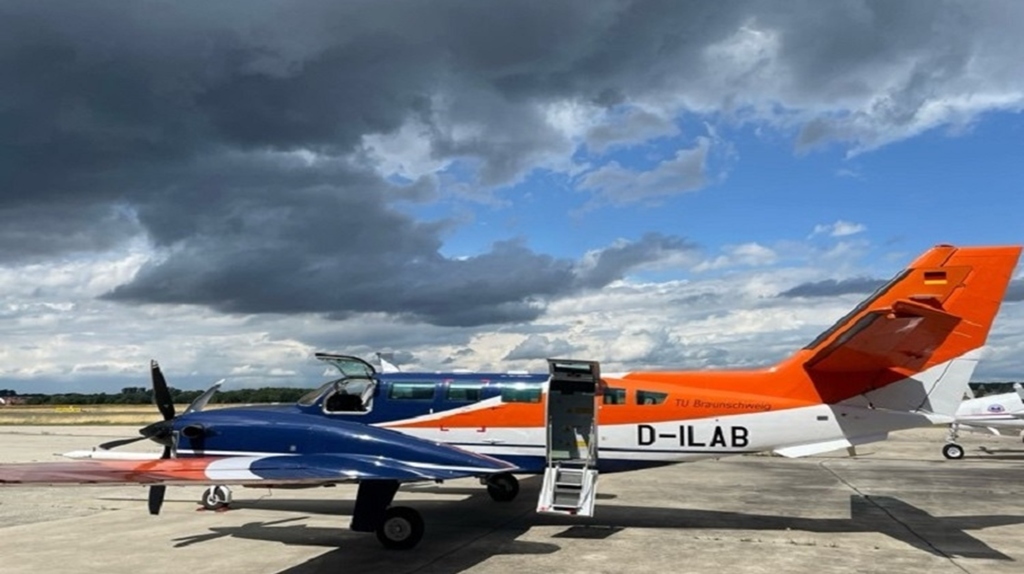
Novel Doppler lidar system resolves previously unattainable valley circulations during test flights in the Alps
more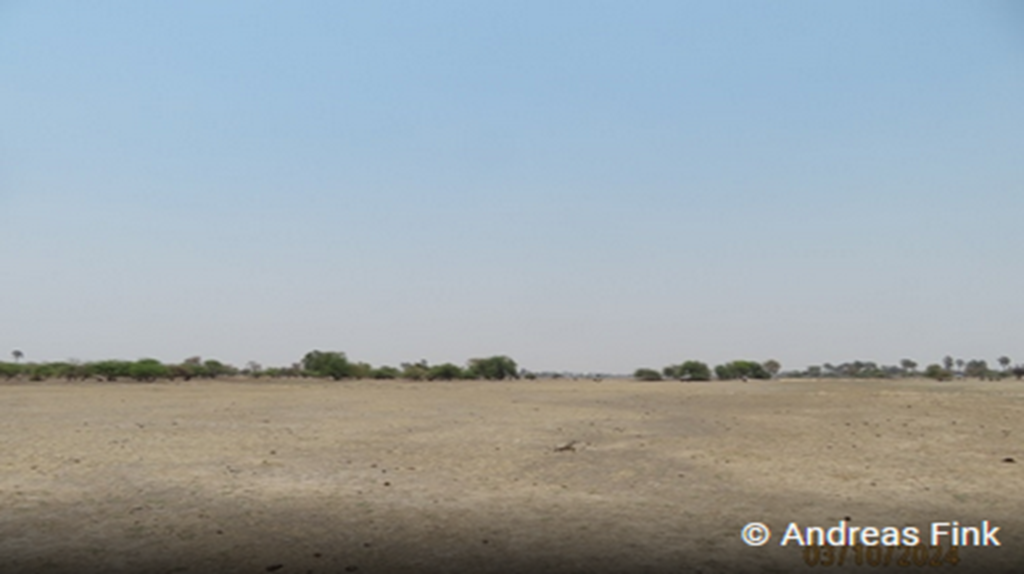
Co-HYDIM-SA will improve water security for millions of people in Southern Africa who are currently enduring one of the worst drought to ever hit the region.
more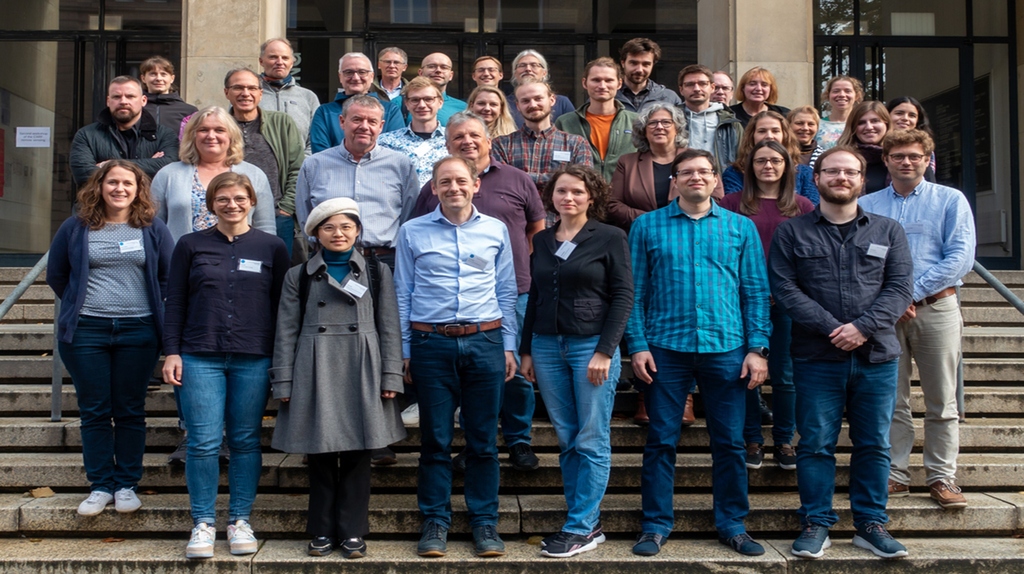
On 16 und 17 October Helmholtz scientists met for a workshop in Karlsruhe to discuss recent developments in remote sensing of the Earth system.
more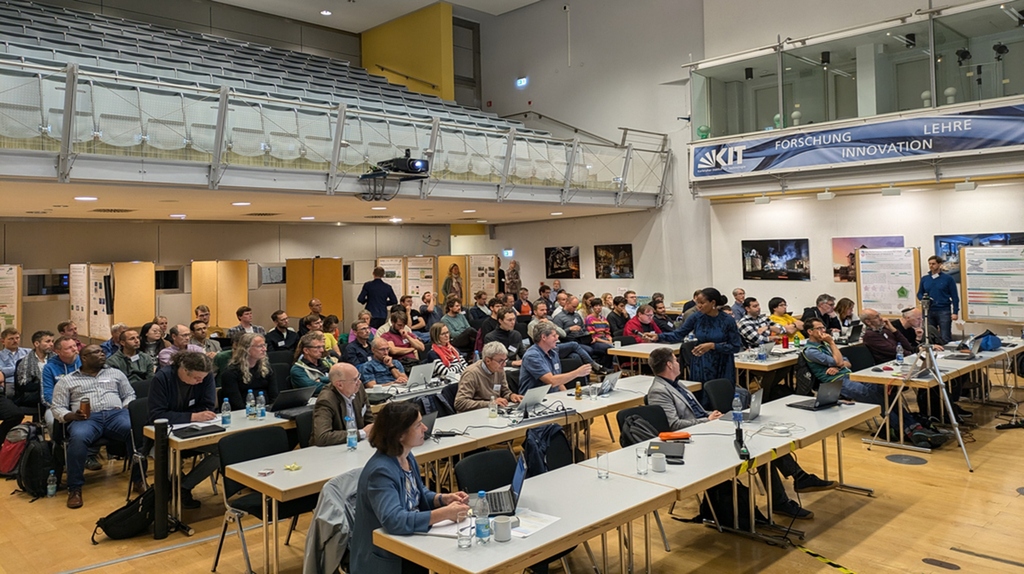
During the 2nd General Assembly, 90 scientists from more than 25 institutions met to discuss the status of the joint research project, present results and plan the next steps.
more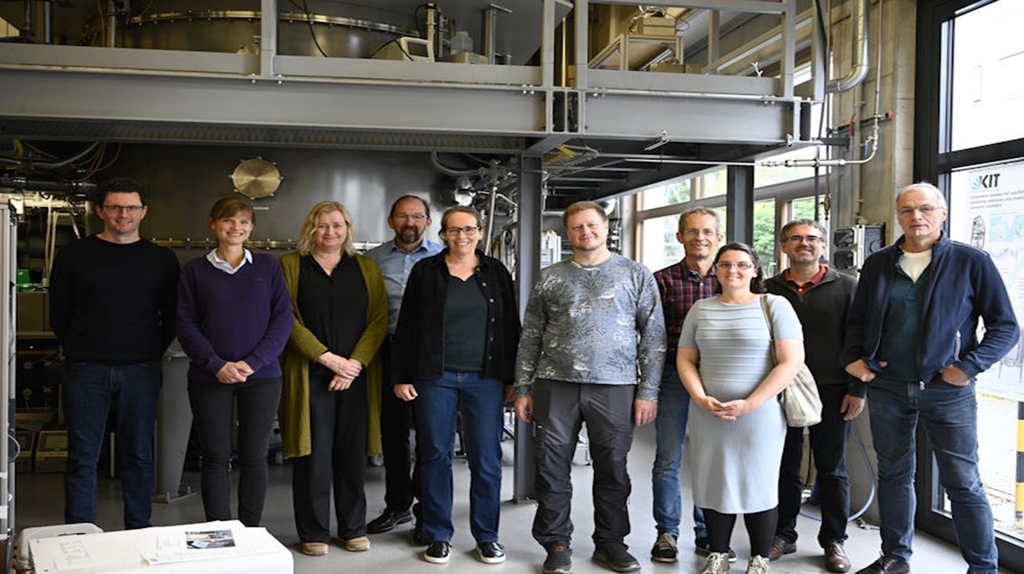
The new ACTRIS (Aerosol Clouds and Trace Gases Research Infrastructure) General Director Eija Juurola and Senior Officer Niku Kivekäs visited the Topical Centre for Cloud In-Situ Measurements situated at IMK-AAF.
more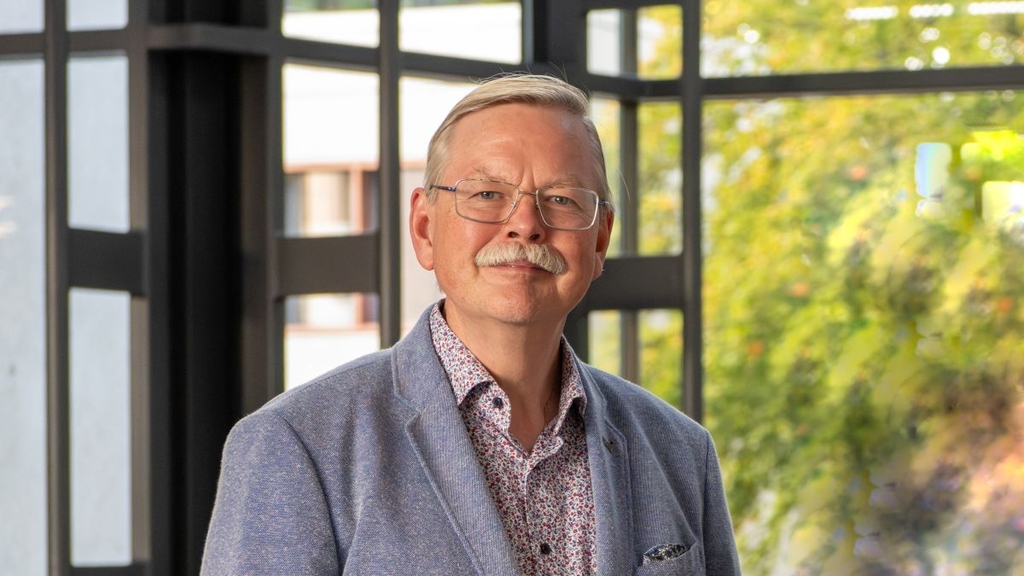
Peter Braesicke moves from KIT to the Deutsche Wetterdienst at the beginning of September 2024.
more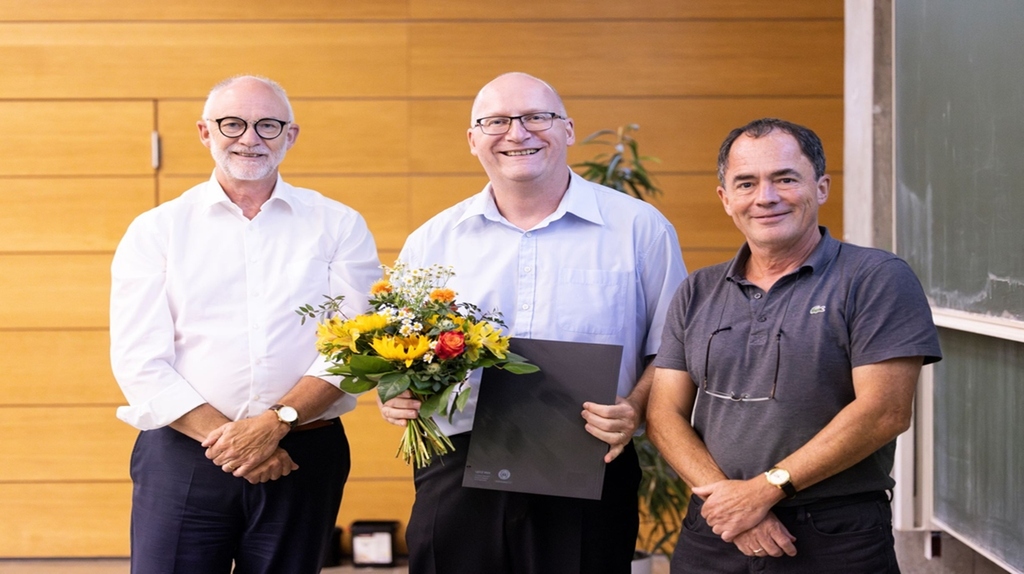
At this year's summer reception, the KIT Freundeskreis und Fördergesellschaft e. V. (KFG) honored Alexander Streili, among others, for the innovative design of the emergency safety device for the pipe supply lines for the IAGOS-CARIBIC system. Our warmest congratulations!
more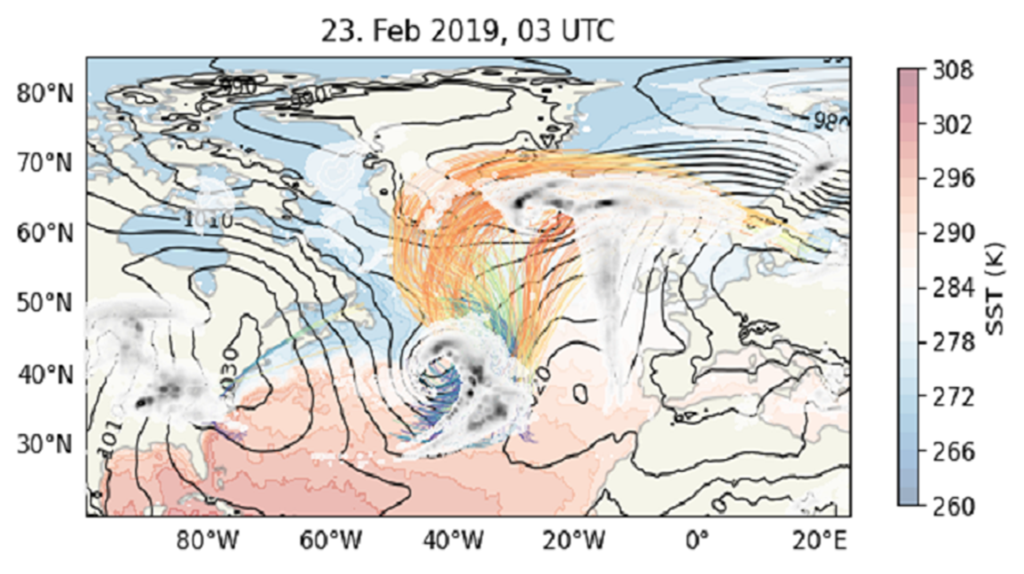
In the last two years, sea surface temperatures in the North Atlantic were record-breaking. For a case study from February 2019, we investigate how sea surface temperature can affect weather patterns in Europe.
more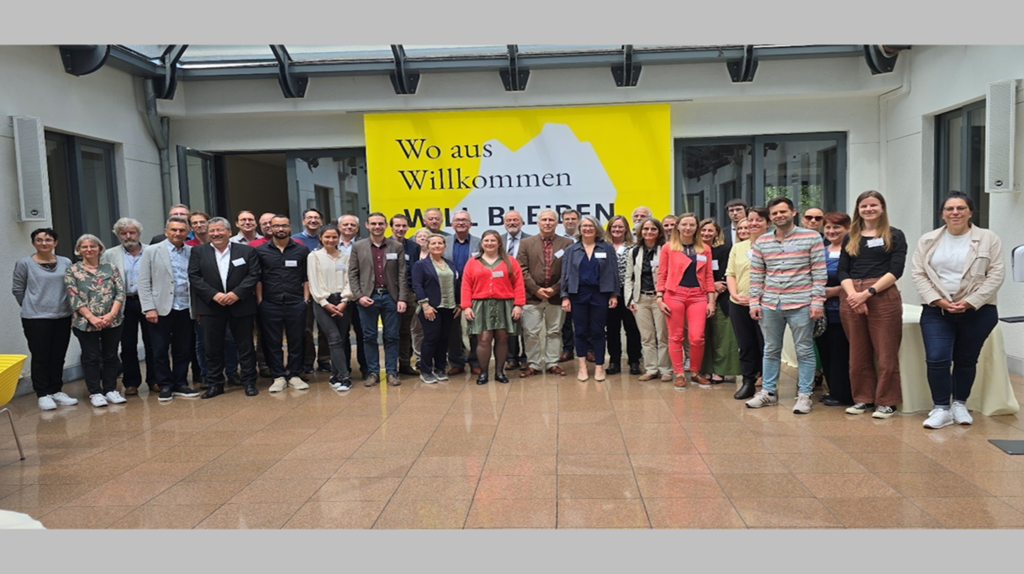
Recent scientific progress in the field of ultrafine particles (UFP), the smallest constituents of airborne particulate matter, on air quality, climate, and human health were discussed on the 9th EFCA Ultrafine Particles Symposium. This included a dialogue with policymakers on the revision of the European Ambient Air Quality Directive for UFP. The symposium took place on July 3 - 4 in Brussels, Belgium. It is co-organized by KIT, GUS, CEEES, and EFCA and chaired by the head of IMK-AAF, Prof. Thomas Leisner.
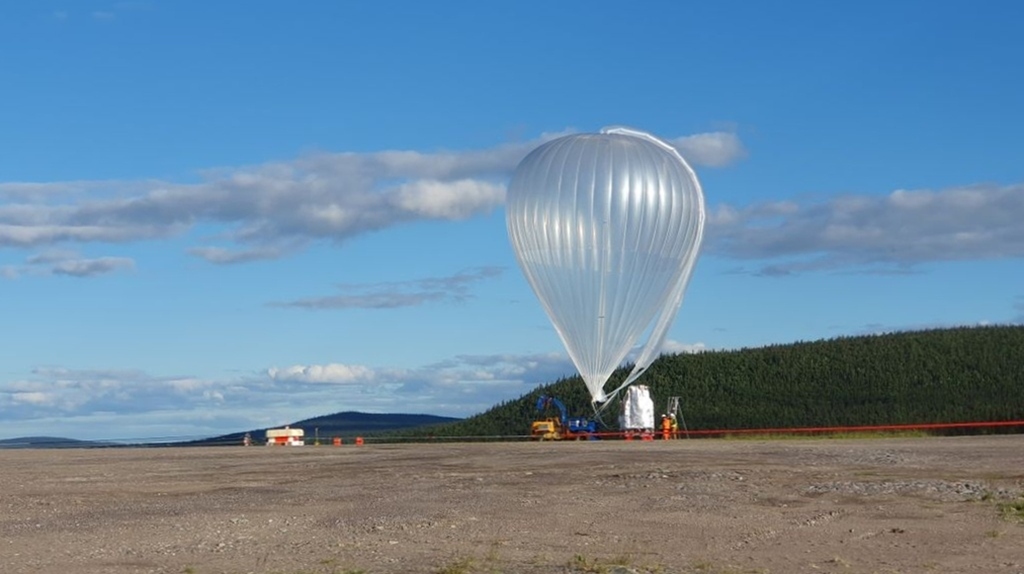
The newly developed imaging FTIR spectrometer GLORIA-Lite was flown in a stratospheric balloon from Kiruna (northern Sweden) over Greenland to Baffin Island (Canada) from June 22 to 26, 2024. During this flight, the atmospheric composition was measured between 5 and 40 km altitude.
more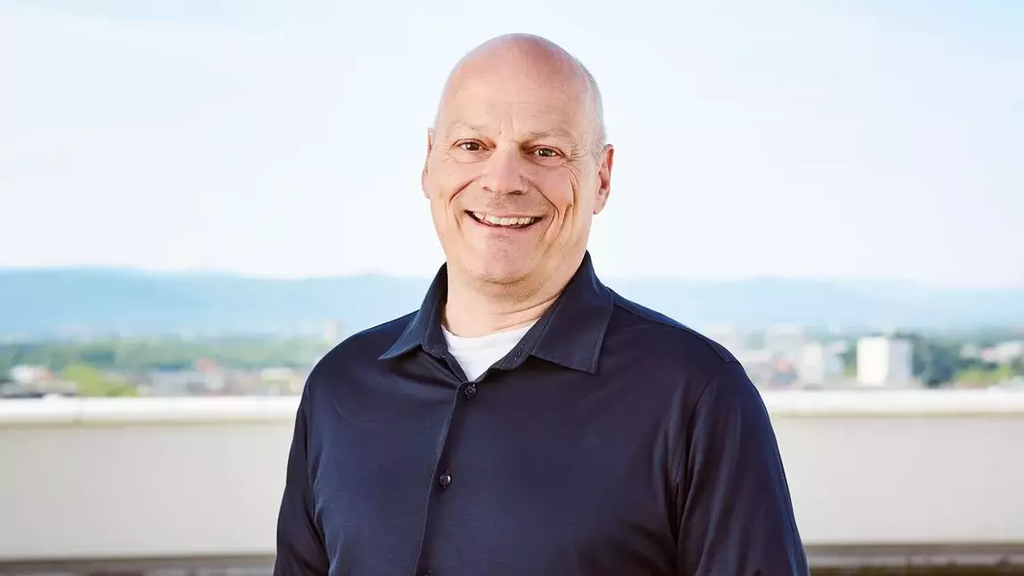
Meteorologist Andreas Fink of the Karlsruhe Institute of Technology (KIT) warns of unprecedented heat waves and their consequences for health, and he explains how Germany should prepare for them.
more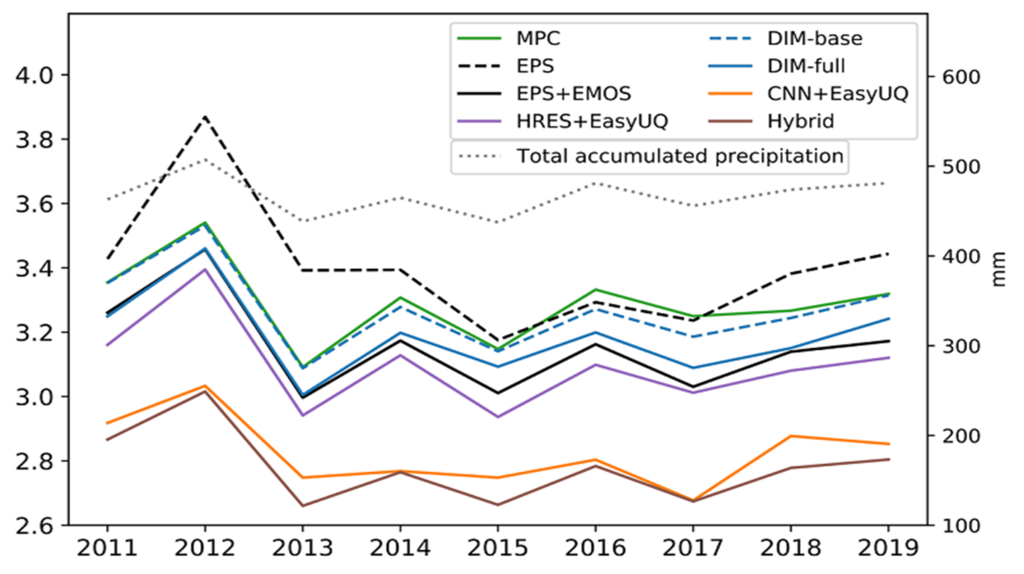
Machine learning and statistical emulators help to better understand and forecast the complex weather and climate of tropical Africa
more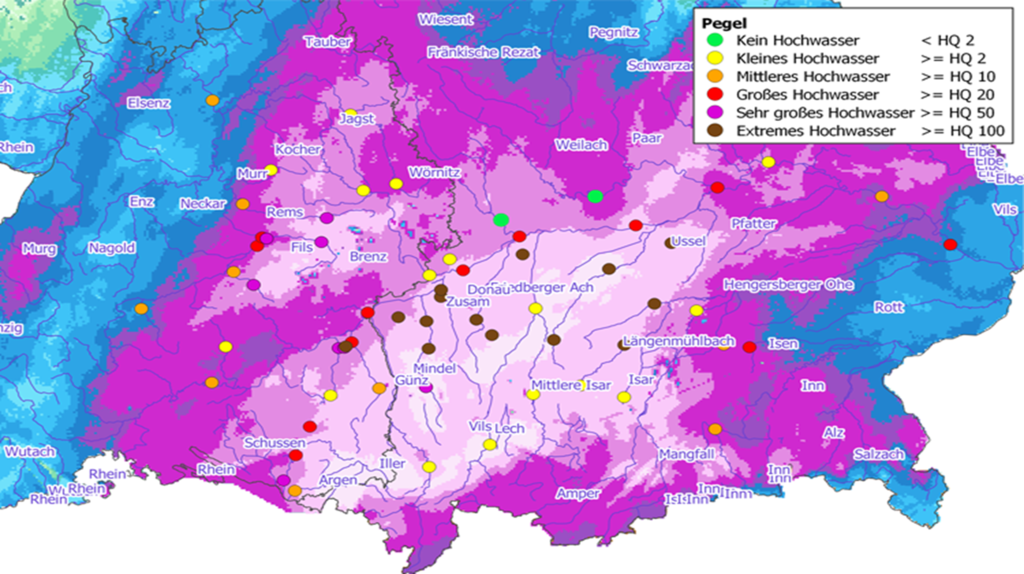
While the flood was still in progress, CEDIM researchers carried out an initial historical classification of the event and categorized regions according to the degree of expected damage.
more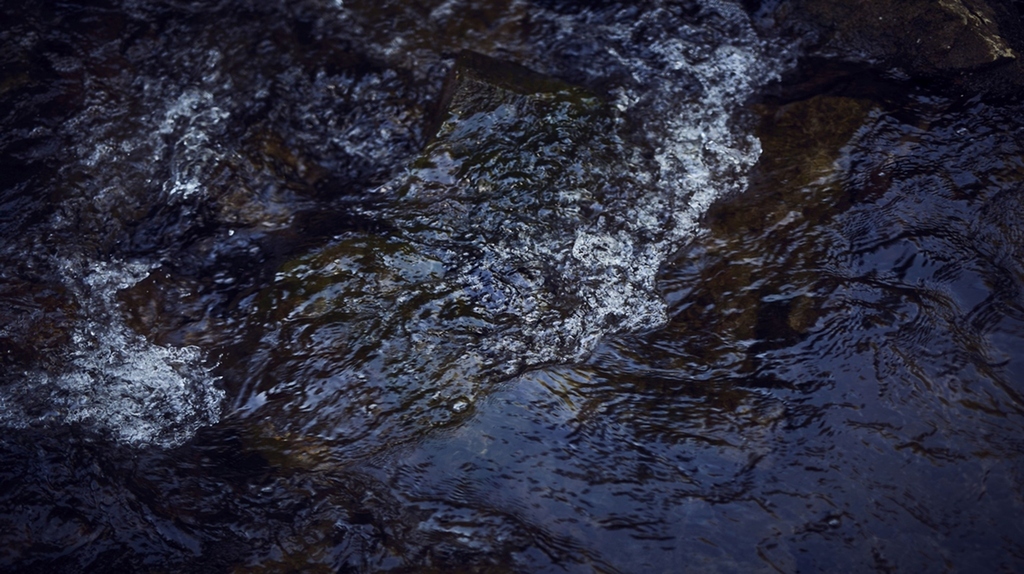
Interview with Prof. Dr. Harald Kunstmann on intense precipitation events over small catchment areas. The connection between the position of the precipitation cell, its influence on the runoff calculation and advanced flood water forecasting. Interview from minute 06:23. Forwarding to ARD media library.
more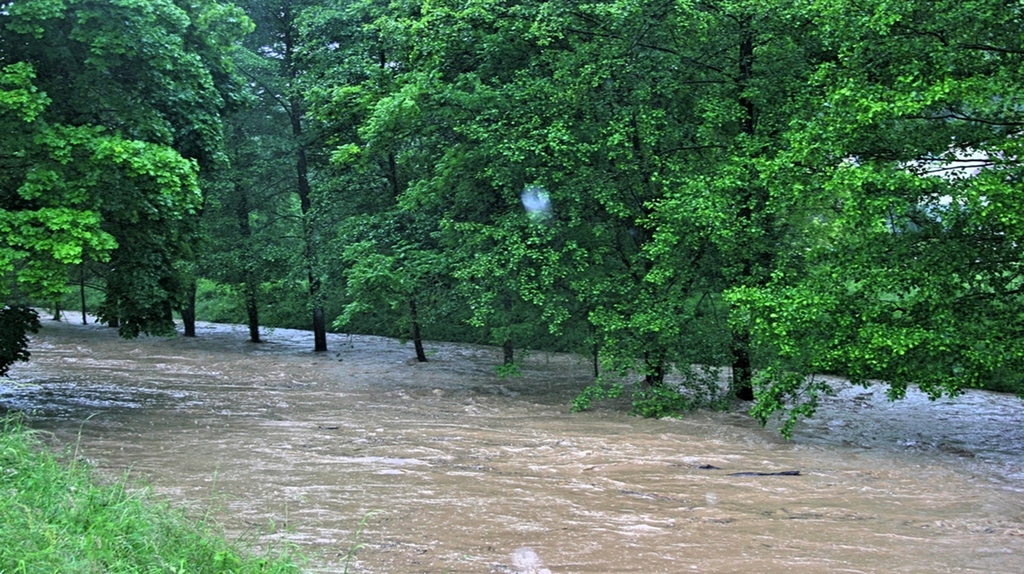
Climate change, the increase of Vb-low pressure areas, longer-lasting weather conditions, increase of extreme weather events, higher humidity due to warmer temperatures and the current flood event. Interview with Prof. Dr. Harald Kunstmann from minute 23:26. Forwarding to ARD media library.
more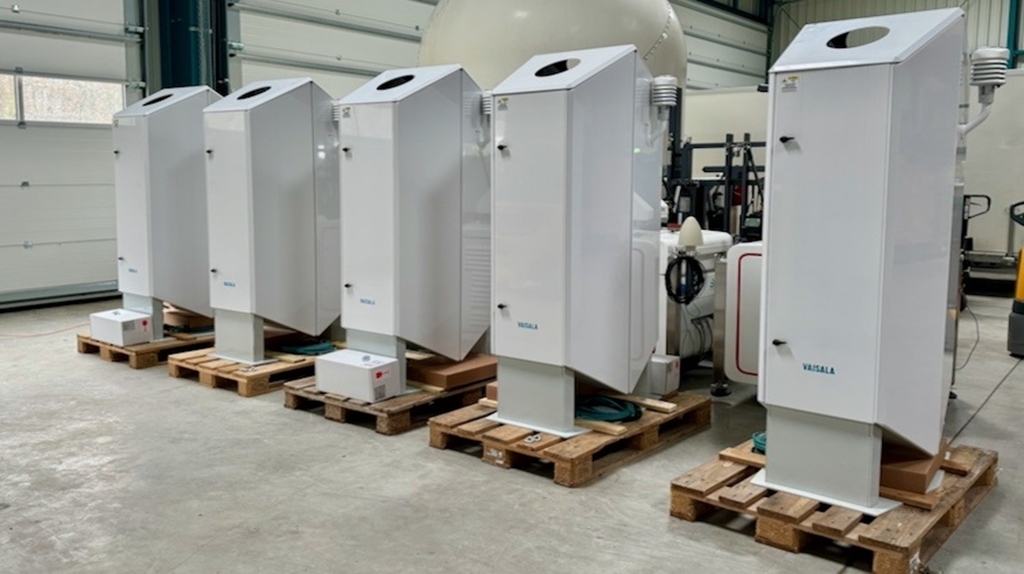
Five new DIAL profilers extend the KITcube measuring system with continuous measurements of water vapor profiles in the boundary layer
more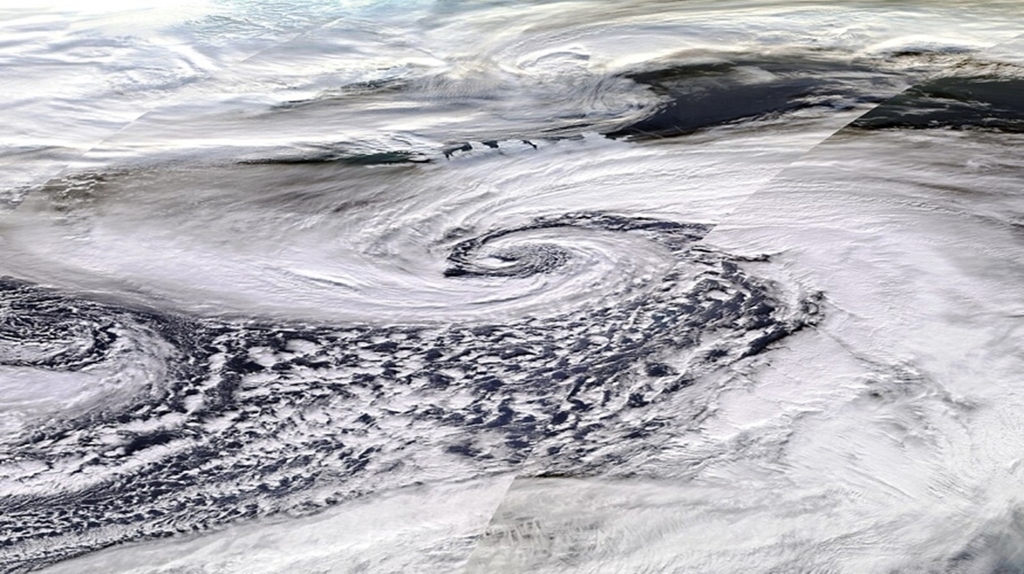
A combination of different datasets is crucial to obtain a representative picture of windstorm associated impacts.
more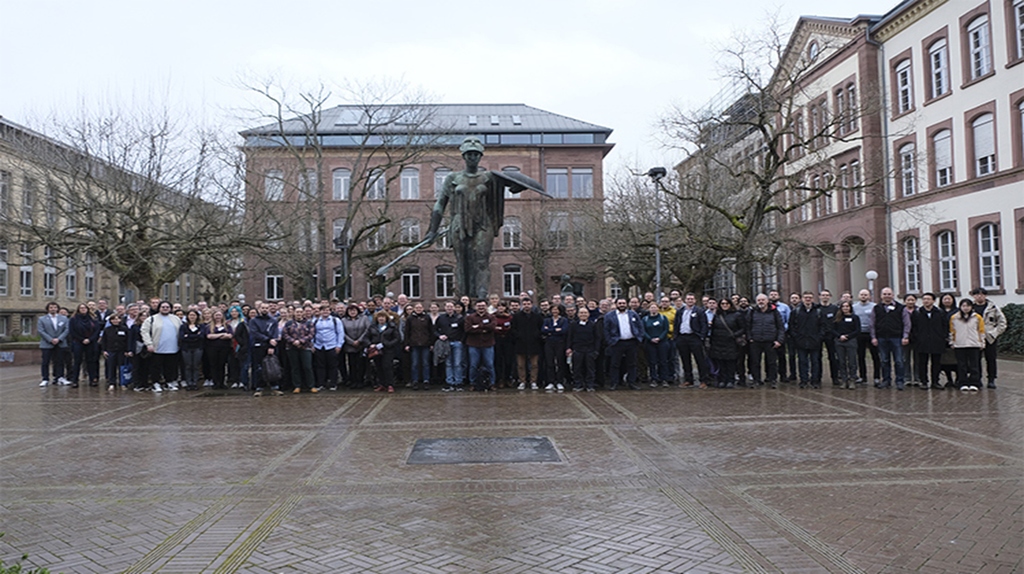
A combination of different datasets is crucial to obtain a representative picture of windstorm associated impacts.
more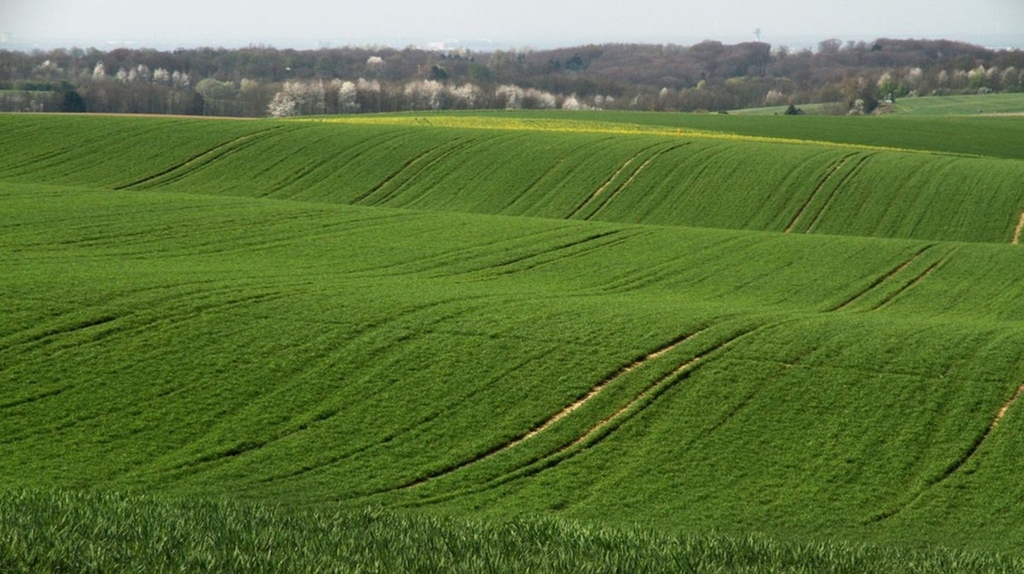
Prof. Dr. Almut Arneth investigates the influence of land use and climate change on terrestrial habitats and the associated biodiversity. Forwarding to science.org
more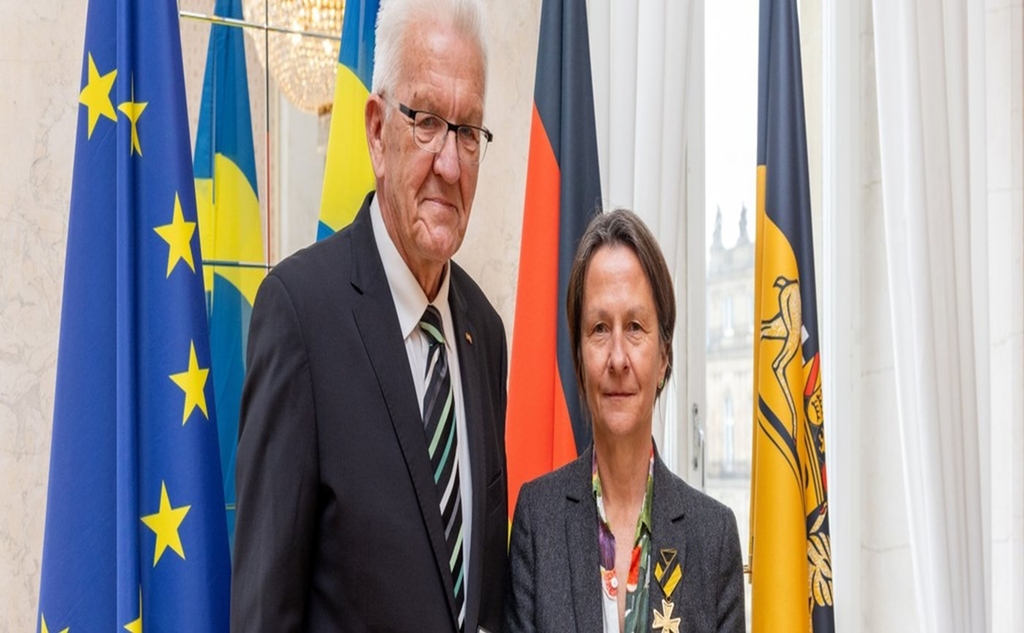
Prof. Dr. Almut Arneth has been awarded the Order of Merit of the State of Baden-Württemberg for her research work linking climate science and biodiversity. Forwarding to baden-wuerttemberg.de
more
6-week field campaign by researchers from KIT and Leipzig University in wintry Finland
more
To adapt to climate change, Africa needs long-term investment in scientific infrastructure and careers in meteorology
more
Lidar aerosol measurements by Dr. Hannes Vogelmann as part of the trans-European measuring network "Actris" show influences from Saharan dust up to an altitude of 5 km. Forwarding to Merkur.de
more
Researchers at Campus Alpin are investigating whether spreading liquid manure close to the ground on grassland results in significantly lower ammonia emissions compared to conventional methods, even at cool air temperatures. Forwarding to the ARD media library.
more
Prof. Dr. H. Kunstmann from the IMK-IFU Campus Alpin receives the German Hydrology Award 2024 for his research on the topic of water as a resource: water availability, climate phenomena and modeling of hydrological processes.
more
From April to June, the presentation globe advertises meteorological research at KIT at a prominent location on Kronenplatz.
more
With the model system ICON-ART developed by KIT, the DWD will be able to improve its energy
forecasts by predicting mineral dust and its effects on radiation.
more
The new edition of the book "Klimawandel in Deutschland" shows the challenges of climate change in Germany and offers approaches for adaptation
more
The prize honors his research on Dunkelflauten (a compound event of low wind and solar energy yield) in Germany and their relation with large-scale weather patterns.
more
Prof. Dr. H. Kunstmann from the IMK-IFU Campus Alpin receives the German Hydrology Award 2024 for his research on the topic of water as a resource: water availability, climate phenomena and modeling of hydrological processes.
more
Relationship between the success of reforestation projects in Africa and the quality of small-scale landscape ecosystem classification. Forwarding to sciencemediacenter.de
more
Consequences in Bavaria: longer and more frequent dry spells, stress on ecosystems and influence on economic developments. Interview with Prof. Dr. Harald Kunstmann. Forwarding to www.br.de
more
Increasing extreme weather events and their consequences for the environment, the economy and social life. Prof. Dr. Harald Kunstmann on the regional effects. Forwarding to www.br.de
more
Valuable data for the insurance industry: Satellite data is used to estimate the spatial distribution and return periods of hail.
more
Climate change is about to impact our world severely
more
A simple diagnostic tool elucidates why mean rainfall differs in tropical aquachannel simulations with different configurations
more
Public access brings greater transparency to science and enables collaborative efforts to improve environmental forecasting worldwide
more
The South German Climate Office was successful with a start-up project for heat adaptation in small municipalities in Baden-Württemberg
more
A delegation of researchers from seven Helmholtz centers traveled to Brussels to engage with political and other stakeholders around the European Union
more
Rising snow line, shorter snowfall periods, temperature increase of up to 4°C by 2050. Prof. Dr. Harald Kunstmann on winter climate change in the Alps. Interview from minute 06:30. Forwarding to DW Travel.
more
Dr. Rer. Nat. Hannes Vogelmann uses LIDAR to measure the height distribution of aerosols and water vapor on the Schneefernerhaus. Interview from Minute 01:40. Forwarding to Klimawandel meistern.
more
The campus tours at KIT Campus North have been revised and have been given a modern booking system. In addition to a general lecture on the main areas of research at KIT and the tour of the campus, scientific and technical facilities can also be visited. The employees themselves now provide insights into the facility and the daily tasks and issues.
AIDA is a bookable tour package and can be visited on Wednesdays between 09:30 and 11:00 am and on Thursdays between 12:30 and 14:00 pm.

The renowned weather and climate model ICON is now being made available to society under an open source licence with the participation of KIT researchers.
more
Habitat fragmentation and land use change threaten 65% of tree species in the Atlantic rainforest, 43% of tree species worldwide and 82% of regional tree species. Forwarding to mdr.
more
The International Excellence Talk by Daniel Cziczo on Nov 29, 2023 entitled
Improving our understanding of Earth’s upper troposphere and lower stratosphere by combining aircraft and laboratory studies
is now available online. In his talk, Daniel Cziczo reviews how aircraft measurements and laboratory studies have been, and will continue to be used to better understand atmospheric chemistry, precipitation and our climate.
more
New book edited by Sylvia C. Sullivan and Corinna Hoose explores the complexity of clouds.
more
A high-resolution climate simulation ensemble reveals the future development of heatwaves with climate change and the local heat stress for southern Germany.
more
Interview with Prof. Dr. Almut Arneth on CO2 emissions and the use of natural resources and strategies to lower emissions through ecosystem management. Forwarding to Tagesschau.
more
KIT and ICPAC join forces to spotlight early warning systems and present SPS Blue Nile at COP28. Forwarding to the BMBF initiative GRoW.
more
In a joint project by the Universities of Munich (LMU, TU), Harvard and KIT, the air quality in Munich is comprehensively investigated. The aim of the project is to understand air pollution processes and improve air quality in the long term.
Initial measurements of aerosol particles and trace gases were carried out in August 2023 using a city-wide sensor network, mobile observations, remote sensing methods and detailed chemical analysis. KIT contributes reference measurements with mass spectrometers and an aerosol lidar. The results are now linked to models in order to develop strategies to improve air quality.

Melting of West Antarctica seems inevitable - but don't lose sight of positive trends
more
Prof. Dr. Harald Kunstmann: "Early warning systems for all are a contribution to greater climate justice".
more
Researchers at KIT have used deep learning to improve both the spatial and temporal resolution of coarse precipitation maps for the first time.
more
Researchers at KIT Campus Alpin are using data from the mobile phone network to create rainfall maps in West Africa in order to improve flood forecasting in the data-poor region.
more
International study ahead of COP28: Public-private partnerships could help protect developing countries from the financial consequences of climate change
more
Bridging Spheres Pop-up Campus is a 5-day Helmholtz top event in science communication that brings together the spheres of science, media, public and policymaking. It will take place April 8-12, 2024 at KIT Campus Alpin in Garmisch-Partenkirchen.
more
The CAIRT satellite mission aims to clarify how the Earth's atmosphere reacts to climate change.
To CAIRT website
more
Dr. Daniel Cziczo was named KIT International Excellence fellow and has started his visit to the IMK-AAF beginning of October. The IMK-AAF and Daniel Cziczo are linked by years of excellent joint research in the laboratory as well as in the field. During his visit, we will work on new instrument developments and perform AIDA campaigns to validate instruments and elucidate recent aircraft observations made by Cziczo and his team.
We are honored and delighted to have Dan with us and are looking forward to our collaboration.
more
During the HALO (High Altitude and Long Range Research Aircraft) Symposium on 9 November 2023, Dr. Sören Johansson received the award for the best HALO publication 2023 for his work on upper atmosphere pollution from fires in the Amazonian region.
more
Expert panel and panel discussion on the Oberland energy transition (EWO), which envisages the switch from fossil fuels to renewable energies by 2035. Forwarding to Merkur.
more
This project investigates temporal clustering of different extremes based on building insurance data and with respect to potential meteorological triggers
more
Water vapor is a natural greenhouse gas. ARD SMS - Schwanke meets Science reports on the measurement of the water vapor concentration in the atmosphere above Mt. Zugspitze at the Schneefernerhaus environmental research station. Forwarding to the ARD-Mediathek.
more
Evelyne Touré and Appolinaire Vondou visited IMK-TRO to conduct research on extreme rainfall and air pollution in Africa
more
Models show that an even global distribution of nitrogen fertilizers could significantly reduce total global fertilization and the resulting environmental impact
more
Recognition for the development of the online-coupled meteorological and aerosol-chemistry models COSMO-ART and ICON-ART
more
In the course of a festive event in Frankfurt on 21 September 2023, Dr. Eva Pauli received the 2023 award of the Wilhelm-Lauer-Foundation.
more
KIT Researchers Investigate to What Extent the Quality of Weather Forecasts Can be Improved by Additional Measurement Data
more
Researchers study cloud formation in the AIDAc simulation chamber - interested parties can visit facility from home
more
The first direct comparision of modeled and observed aerosol aging after a volcanic eruption.
more
KIT researchers publish report on this year's temperature records in the northern hemisphere - Italy was by far heat hotspot in Europe
more
In August and September 2023, the IMK-ASF uses the infrared spectrometer GLORIA on the research aircraft HALO to investigate atmospheric pollution at 5-14 km altitude caused by forest fires as well as by the Asian monsoon.
more informations
To the PHILEAS Helmholtz-Blog

A recent study assesses the performance by numerical models in predicting flow situations of high interest for numerous socio-economic sectors.
more
Researchers recalculate carbon stores in Eastern Europe using models, satellite data and statistics
more
In June and July 2023, we measure the number, size, composition and ice nucleation capacity of aerosol particles on the Feldberg (1493 m asl.). Within the framework of the Swabian MOSES campaign, we investigate in particular the role of aerosols in extreme weather events.
more
Atmospheric measurements, representative of the northern hemisphere, to determine long- and shortlived climate-/ healthdamaging gases. Forwarding to Tagesschau and KIT.
more
In July and August 2023, our cloud chamber PINE (Portable Ice Nucleation Experiment) is measuring ice nucleating particles (INPs) at the High Altitude Research Station Jungfraujoch, next to the INP-instrument HINC-auto (automated Horizontal Ice Nucleation Chamber) operated by ETH Zürich. This is a first campaign to validate INP instruments used within the ACTRIS Cloud In Situ network.
more
The Pangu Weather algorithm developed by Huawei provides cost-effective and energy-saving weather forecasts
more
KIT Researchers Investigate How a Renaturation Initiative in the African Sahel Affects Rainfall on Site
more
...with hail sondes and drones for a better understanding of hail formation - Training successfully completed
more
Recently, the AIDA Atmospheric Simulation Chamber celebrated its 25th year of operation. For the anniversary, we produced a virtual tour of the AIDA laboratory in collaboration with the KIT Center for Technology-Enhanced Learning (ZML).
Explore the worldwide unique AIDA Atmospheric Simulation Chamber virtually, take a look inside the chamber and learn more about different measuring instruments and methods in the daily work of our scientists during your tour.

Measurement campaign in the Black Forest investigates extreme weather in order to better understand and predict their causes and consequences
more
The heat was unprecedented: in the summer of 2021, the western U.S. and western Canada suffered from scorching sun.
more
Setup of Eddy-Covarianz-Station to measure emission of greenhouse gases in Ghana
more
For outstanding teaching in the Introduction Week for international first-year students in the MSc Meteorology and Climate Physics
more
IMK-TRO leads Swabian MOSES measurement campaign to study thunderstorms and heavy precipitation around the Black Forest region
more
The European Commission has awarded the ACTRIS (Aerosol, Clouds and Trace Gases Research Infrastructure) research infrastructure its ERIC status.
The IMK-AAF is leading the topical center "Cloud in-situ" for the direct measurement of cloud processes, together with colleagues from the Leibniz-Institute for Tropospheric Research (TROPOS), Leipzig and the Sonnblick Observatory (Geopshere Austria), Vienna.

New overview study provides solutions for mitigating climate change and species loss
more
Warm conveyor belts that occurred in conjunction with low pressure systems over the North Pacific influenced the forecast for the record-breaking heat wave in western North America during the summer of 2021.
more
Compound weather and climate events: the analysis of the October 2017 wildfires in Portugal and implications for end user guidance
more
The story describes how the KIT scientist uses lasers to monitor the atmosphere.
more
Periods of low wind and solar power output in combination with cold temperatures can stress the energy system.
more
Harald Kunstmann gives information and an outlook in the ZDF interview.
more
Julian Quinting from KIT Receives ERC Starting Grant - ASPIRE Project Increases Reliability of Weather Forecasts and Reduces Computational Costs and Energy Consumption
more
The Austrian Science Fund (FWF) and DFG has approved funding of a bilateral Austrian - German research project “Ice-nucleation activity of alkali feldspar in aerosol” (ICEFELD). This highly interdisciplinary project combining geo-materials science, atmospheric ice formation research, and computational physics will be carried out in collaboration between the cloud microphysics research group at IMK-AAF and University of Vienna.
more
A three-year long science program, IMPACTS, is launching it’s final phase to improve snowfall prediction. Advanced remote sensing and in-situ instruments will fly over the eastern seaboard to identify key processes and improve forecasting. The study aims to increase understanding of snowband formation and the microphysical characteristics of snow particles, thus improving prediction and public safety.
more
KIT researchers and members of national weather services discuss new "playground" to explore the benefits of machine learning in weather forecasting.
more
Cloud radiative heating and cooling have a substantial impact on the dynamics and predictability of an idealized extratropical cyclone.
more
Long-term Research Project with KIT Participation Presents Successful Results.
more
Six KIT Researchers Are Among the Most Cited Scientists Worldwide This Year
more
With his victory at the South German Championships, Christian Scharun qualified for the German Science Slam finals.
more
Understanding natural hazards and being better prepared for them.
more
HELMHOLTZ CLIMATE INITIATIVE: Parliamentary Evening "The Climate Resilient City"
more
Coupling two KITcube Doppler wind lidars enabled a novel perspective of tributary valley outflows during stable nighttime conditions
more
With the help of a monitoring system, sources and sinks of greenhouse gases in Germany are to be better recorded and monitored in the future.
more
KIT performs well in the U.S. News University Ranking 2022-2023 - seven top places nationally
more
Pilot project at IMK-TRO to realize more equal opportunities and appreciation of diversity
more
Skywalker UAVs are used to sample ice-nucleating particles (INPs) up to 2 km, aiming to better understand the difference between ground-based and cloud-level INP measurements.
more
Unprecendented international field campaign in Jordan starts.
more
With its climate research in Africa, KIT makes valuable contributions to flood protection and the preservation of the rainforest.
more
KIT researchers investigate seasonal influence of African streams and rivers on greenhouse gas emissions
more
A new Helmholtz Mentoring Program aimed at postdocs and science managers in the research field Earth & Environment will start in January 2023. Applications are open from 19 September.
more
KIT researchers support ESA satellite preparations by measurements at an altitude of 36 kilometers
more
Heat waves with extreme temperatures and droughts will no longer be rare in the future. Humans and the environment must learn to adapt to these conditions. Nadine Rühr explains how trees react to the heat.
more
Switching from cattle to camel and goat farming promotes more sustainable and ensured milk production in the arid regions of Northern Africa
more
For 68 years, the KIT Institute of Meteorology and Climate Research in Garmisch-Partenkirchen has been researching urgent climate and environmental issues
more
Current studies on the flood disaster in the Eifel region in 2021 and on the future development of such extreme events
more
Global models show a significant influence of clouds on the evolution of the Earth's climate and the evolutionary conditions of life
more
KIT Researchers Verify Global Increase of Ultrafine Particles from Exhaust Fumes of Fossil Fuels and Warn of Significant Weather Effects
more
Christian Scharun convinced both jury and audience with his presentation and won the national final of the science competition
more
KIT Presents Innovative Technology Developments at the Two Main Booths in the "Future Hub" and at "Energy Solutions“
more
A Study with KIT Participation Sheds Light on the Conflict of Goals between Biodiversity and Food Security in Land Use
more
In a meta-study, KIT researchers are investigating how plant growth reacts to the anthropogenic greenhouse gases carbon dioxide and ozone in the atmosphere.
more
KIT ecosystem researcher receives Germany's most important research prize - Gottfried Wilhelm Leibniz Prize honoured with 2.5 million Euros
more
The new German government begins its work today. Climate policy is to play a more important role in the future. But what are the climate policy goals of the coalition agreement between the SPD, Bündnis 90/Die Grünen and FDP? Four statements by scientists from centres of the Helmholtz Climate Initiative.
more
Seven KIT researchers are among the most cited scientists worldwide this year. Evaluation from 2010 to 2020.
more
When the climate changes, it is also affecting the weather. Hans Schipper from the South German Climate Office explained at TEDx KIT how one is connected to the other and what all this has to do with the cuckoo.
more
International field campaign investigates emission, transport and composition of dust in Iceland
more
KIT Researchers Investigate the Effect of Land Use Changes on European Bumblebee Species under a Changing Climate
more
KIT Researchers and Partners jointly investigate Relationships in the Earth System in High Air Layers
more
Atmospheric research in Germany significantly expanded with ACTRIS-D - KIT extends its capabilities to solve current climate issues
more
Scientists use the HALO research aircraft to study the climate impact of cirrus clouds.
more
CEDIM presents report on flood disaster in Rhineland-Palatinate and North Rhine-Westphalia - Damages could exceed ten billion euros
more
"The current event is beyond any previous observations for many parameters. The very high amounts of precipitation in a short period of time, the relatively large area affected, and the high discharge rates of small and medium-sized streams as well as rivers are extreme."
more
KIT and the University of Vienna Researchers Investigate the Influence of small Atmospheric Ice Crystals in the Earth's Climate System
more
With several thousand lightning strikes, hail up to five centimeters in diameter and heavy rainfall, which led to numerous flooded roadways and flooding of smaller rivers, a heavy hailstorm passed over southern Germany on 06/23/2021.
more
ESA Has Selected Four Candidates for a New Earth Observation Satellite – KIT’s Proposal Focuses on Changes in the Earth's Atmosphere.
more
We need to think climate protection and environmental protection together. Measures that focus solely on climate protection, for example, can also have a negative impact on biodiversity and society.
more
Atmospheric Research, Energy Management, and Metallurgy at KIT in Global Comparison. Five subjects rank first in Germany.
more
More precise seasonal meteorological predictions for water-scarce regions by statistical methods from KIT help decision makers to mitigate the local consequences of climate change.
more
KIT researchers verify with the help of a new set of maps that land-use changes are four times larger than previously assumed
more
Research alliance launches measurement campaign relating to hydro-meteorological extremes in the Swabian Jura.
more
In the IAGOS-CARIBIC research infrastructure coordinated by KIT, a 1.7-ton measurement laboratory is used in the cargo hold of a converted passenger aircraft.
more
The European Climate Research Alliance (ECRA) celebrates its 10th anniversary on 10 March 2021. Interview with climate researcher Peter Braesicke, Chair of the Alliance.
more
Hailstorms cause severe damage - and as a result of climate change, they are expected to occur more frequently and more intensely in the future. To discuss the current state of hail research, the IMK-TRO hosted the 3rd European Hail Workshop from 15 to 18 March 2021.
more
KIT shows a record decrease of seven percent in the free troposphere with infrared measurements at Zugspitze.
more
KIT and EDI GmbH Develop Intelligent Assistance System for Forest Management under a Changing Climate – New Interactive Video of the Series “Sachen machen mit KI”
more
IT researchers study the effects of heavy rainfall in southern Germany to develop recommendations for municipalities.
more
KIT Researchers Set Up and Manage the Topical Center CIS for Direct Measurement of Cloud Properties – Part of the European Research Infrastructure ACTRIS
more
